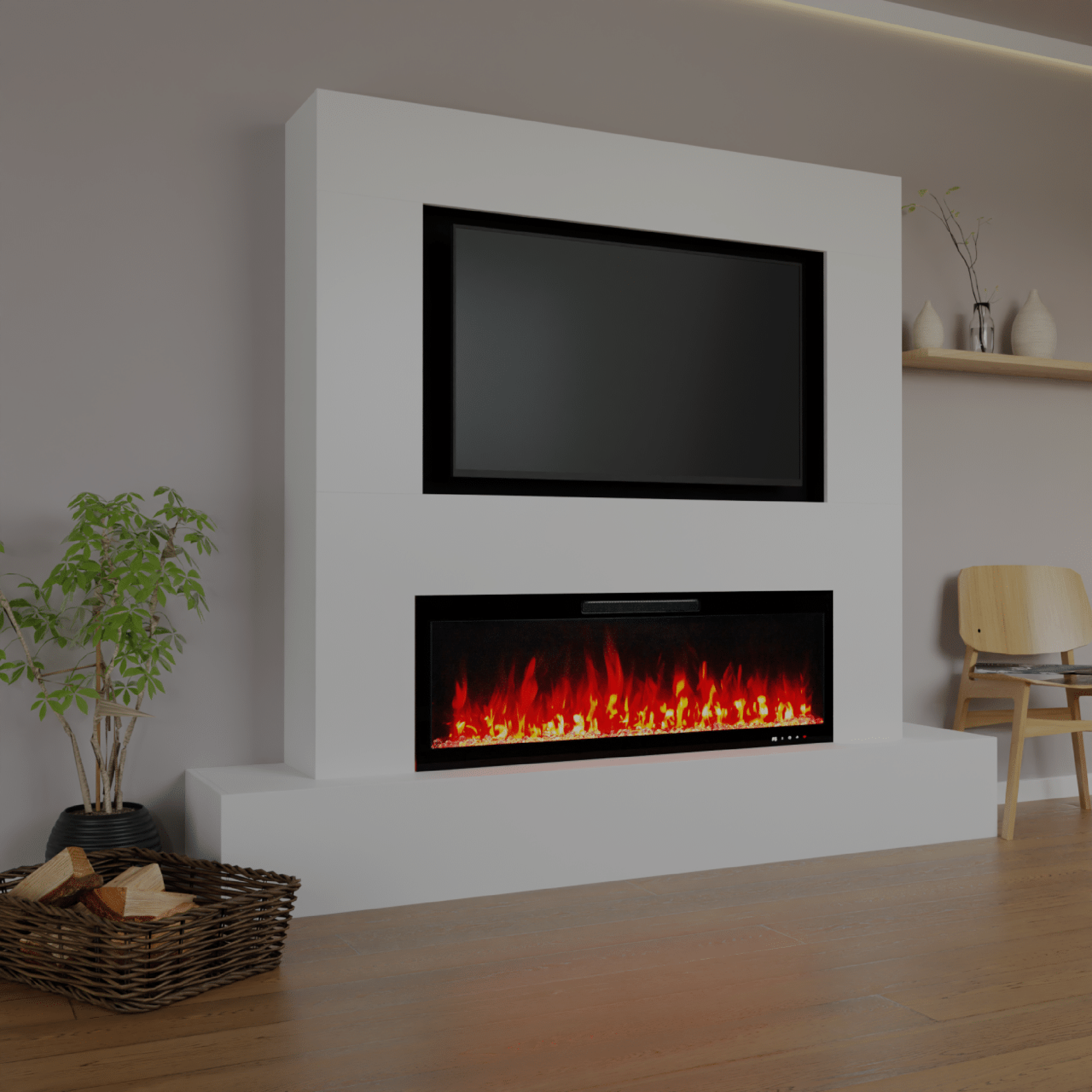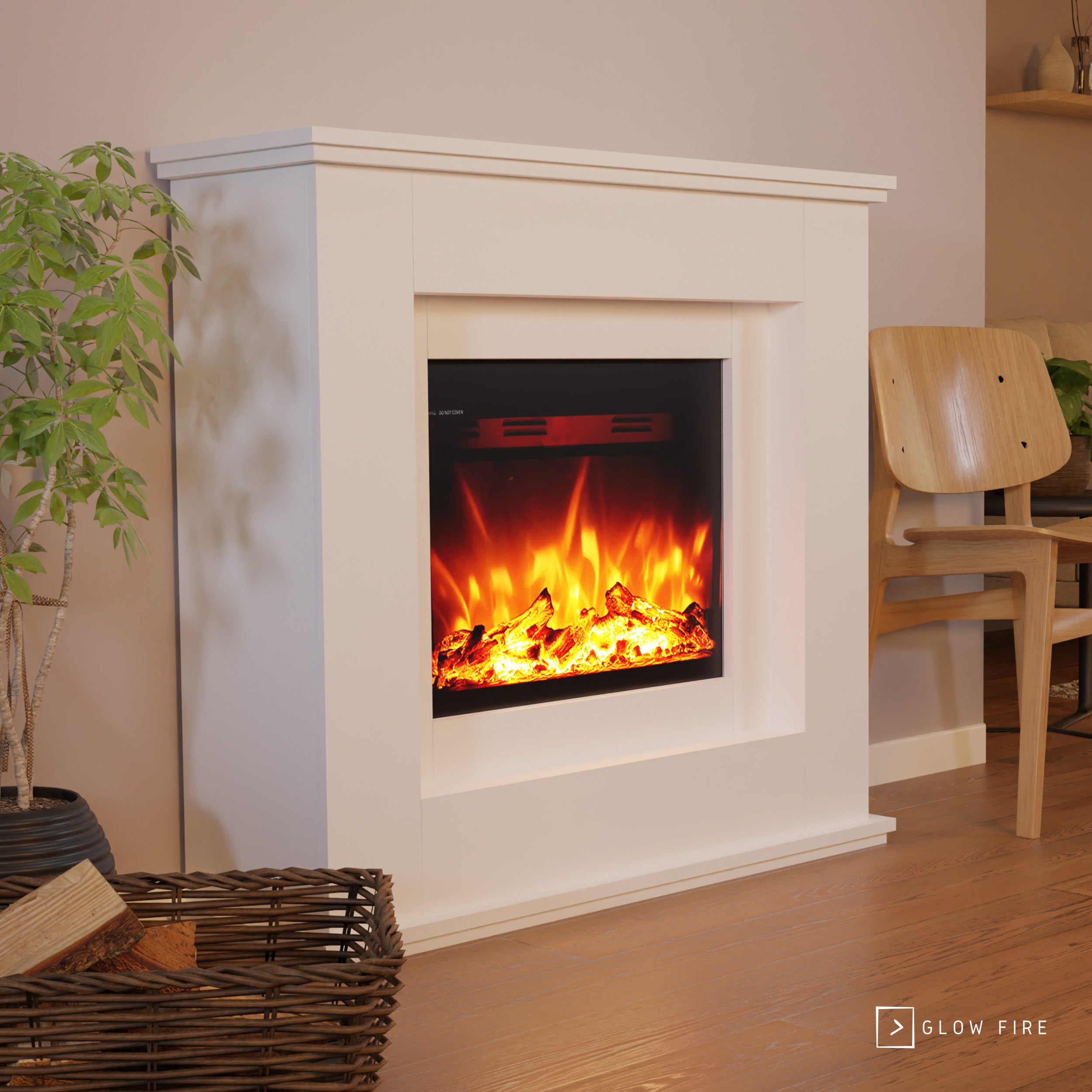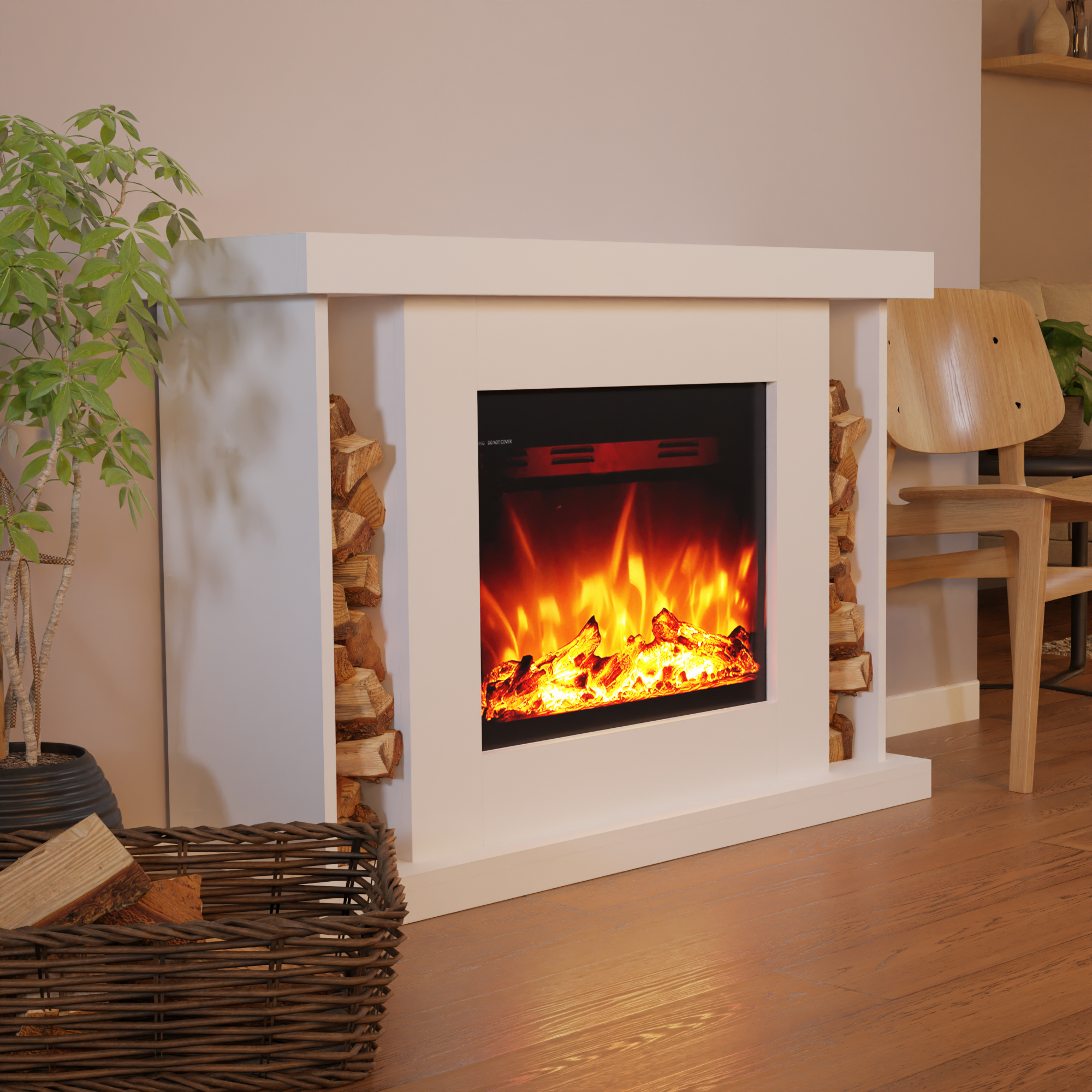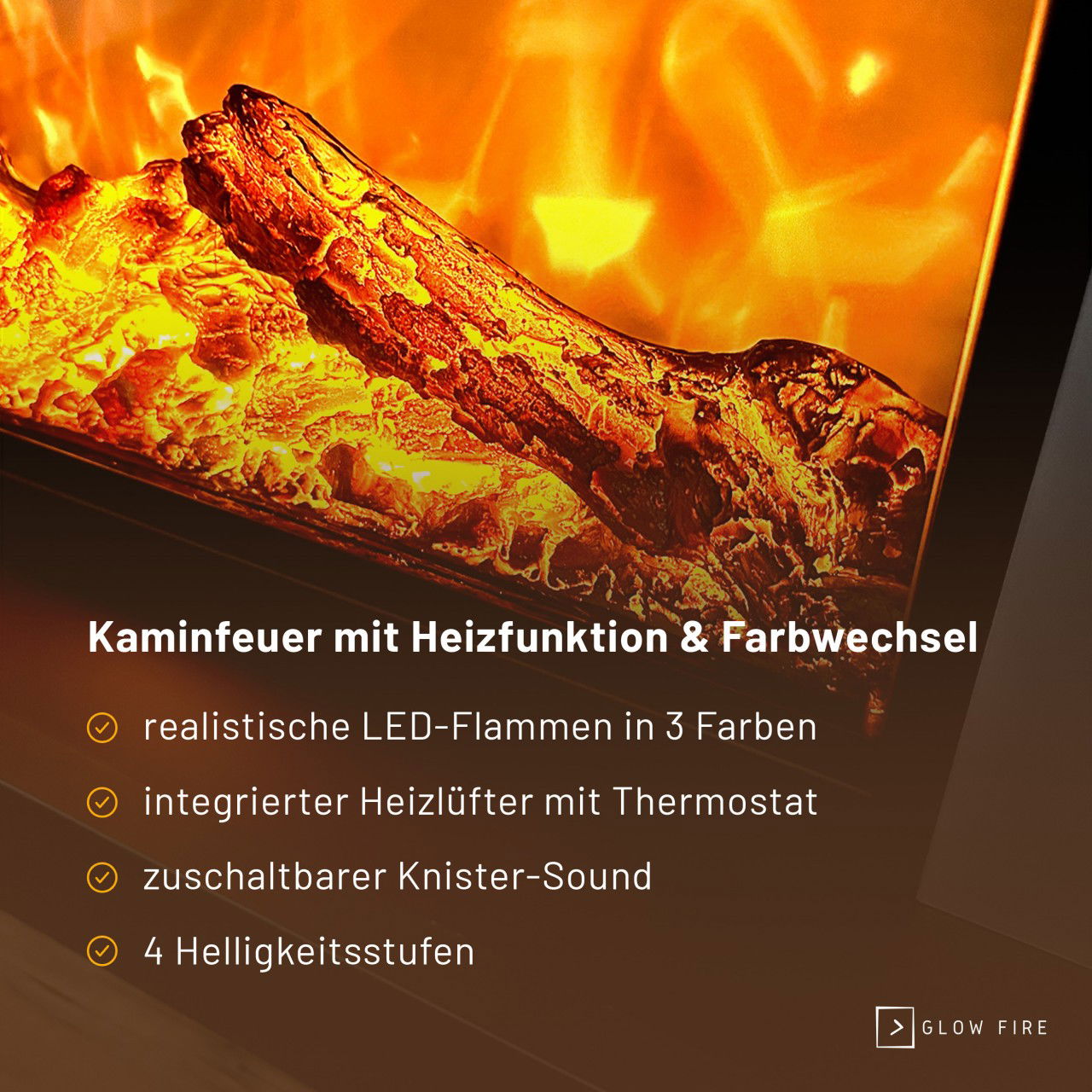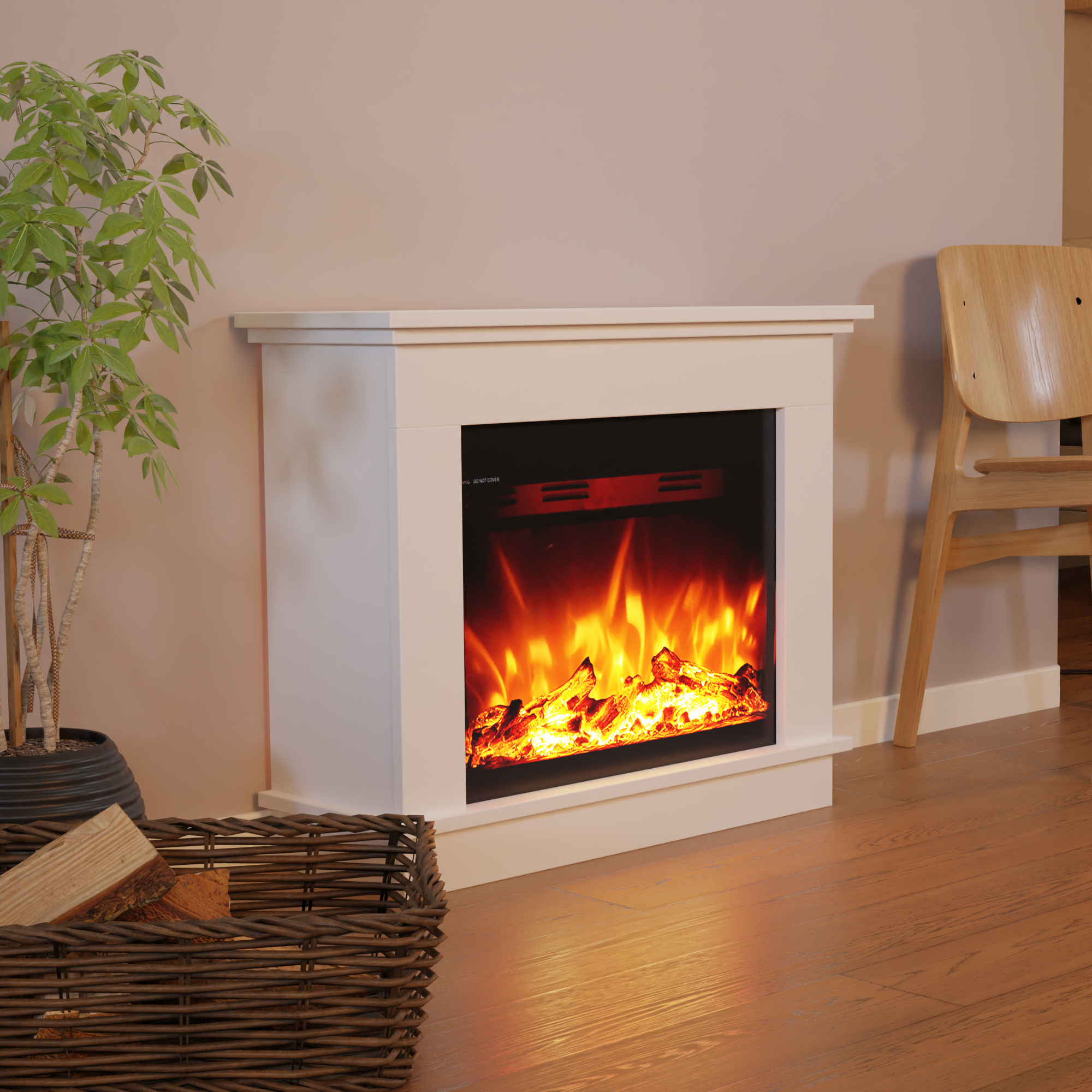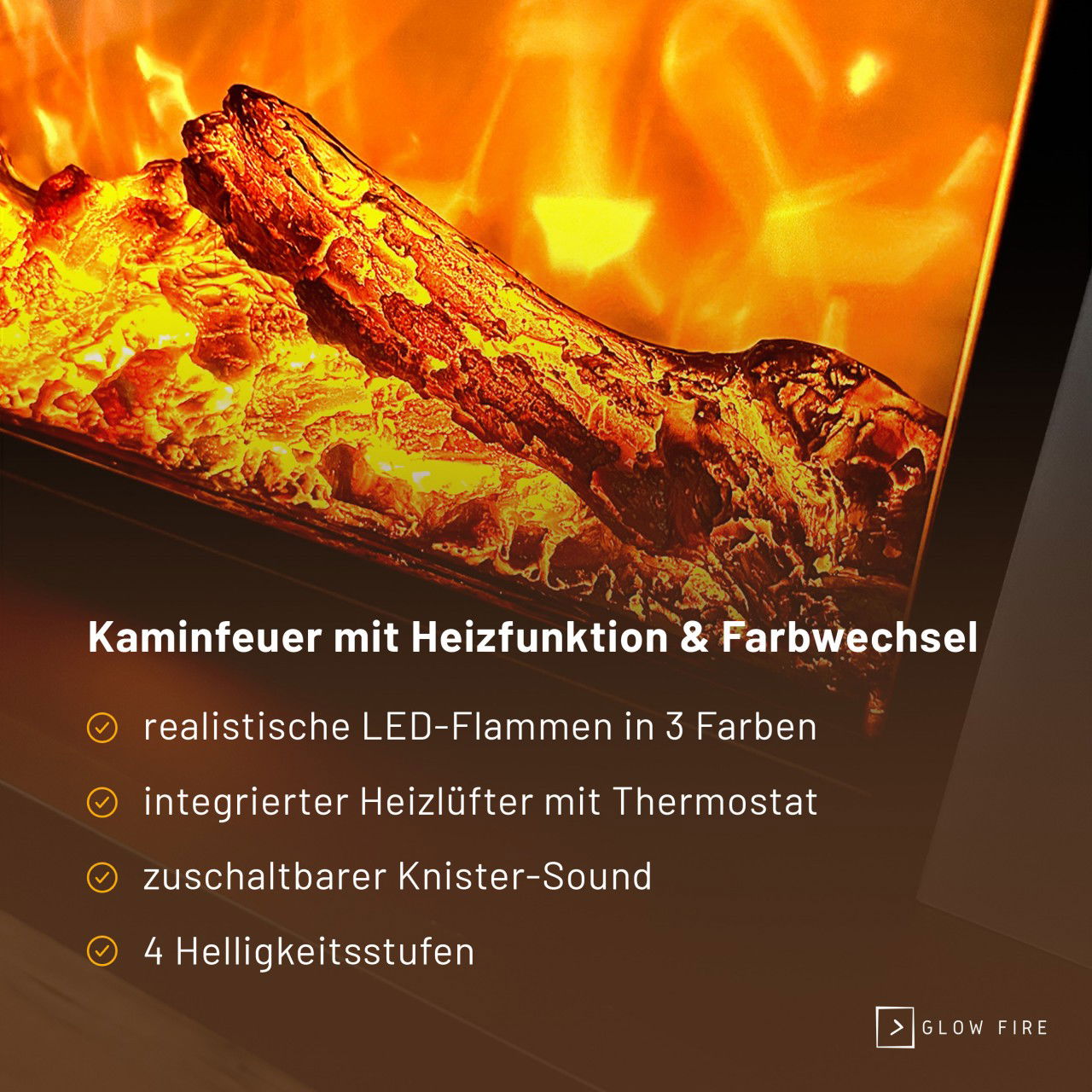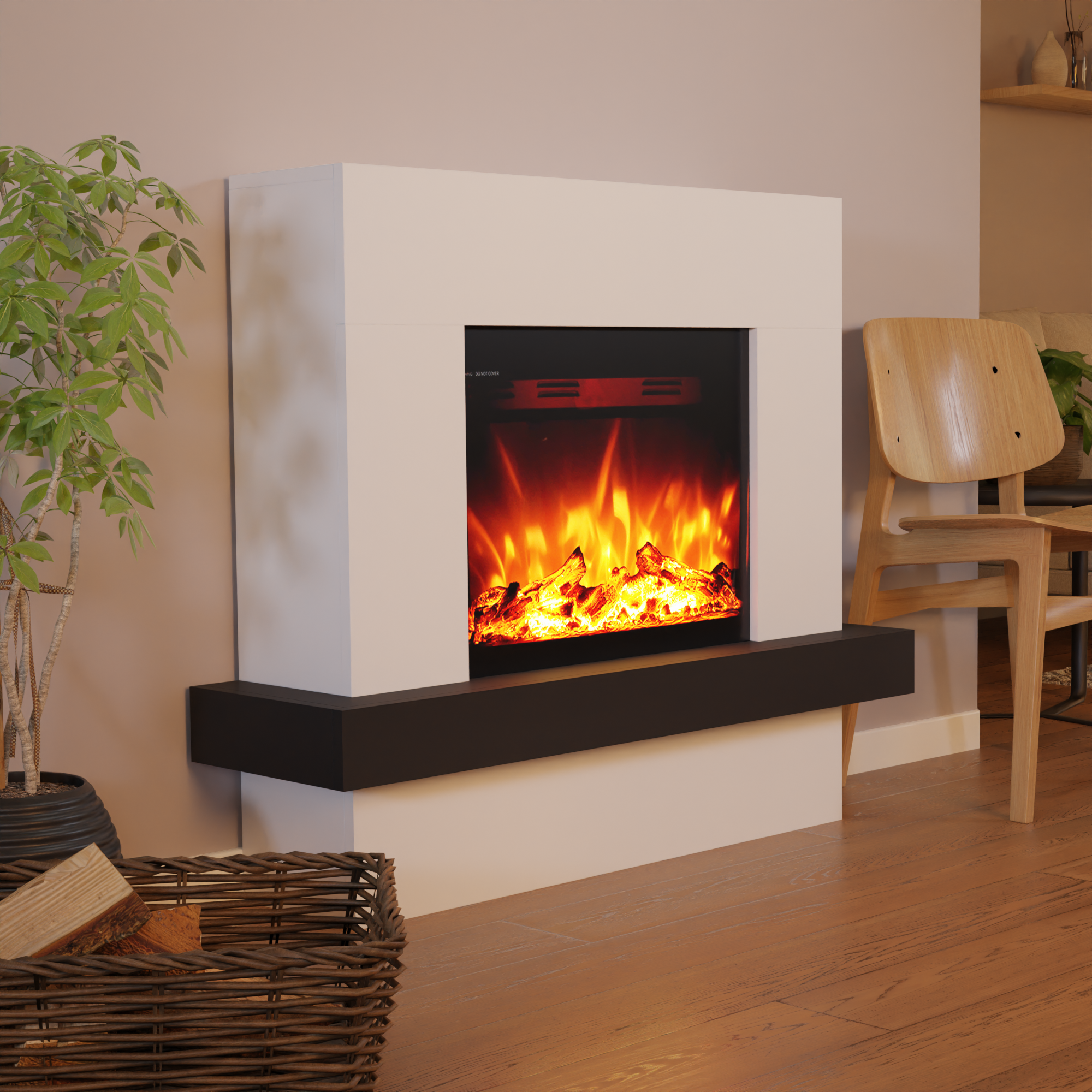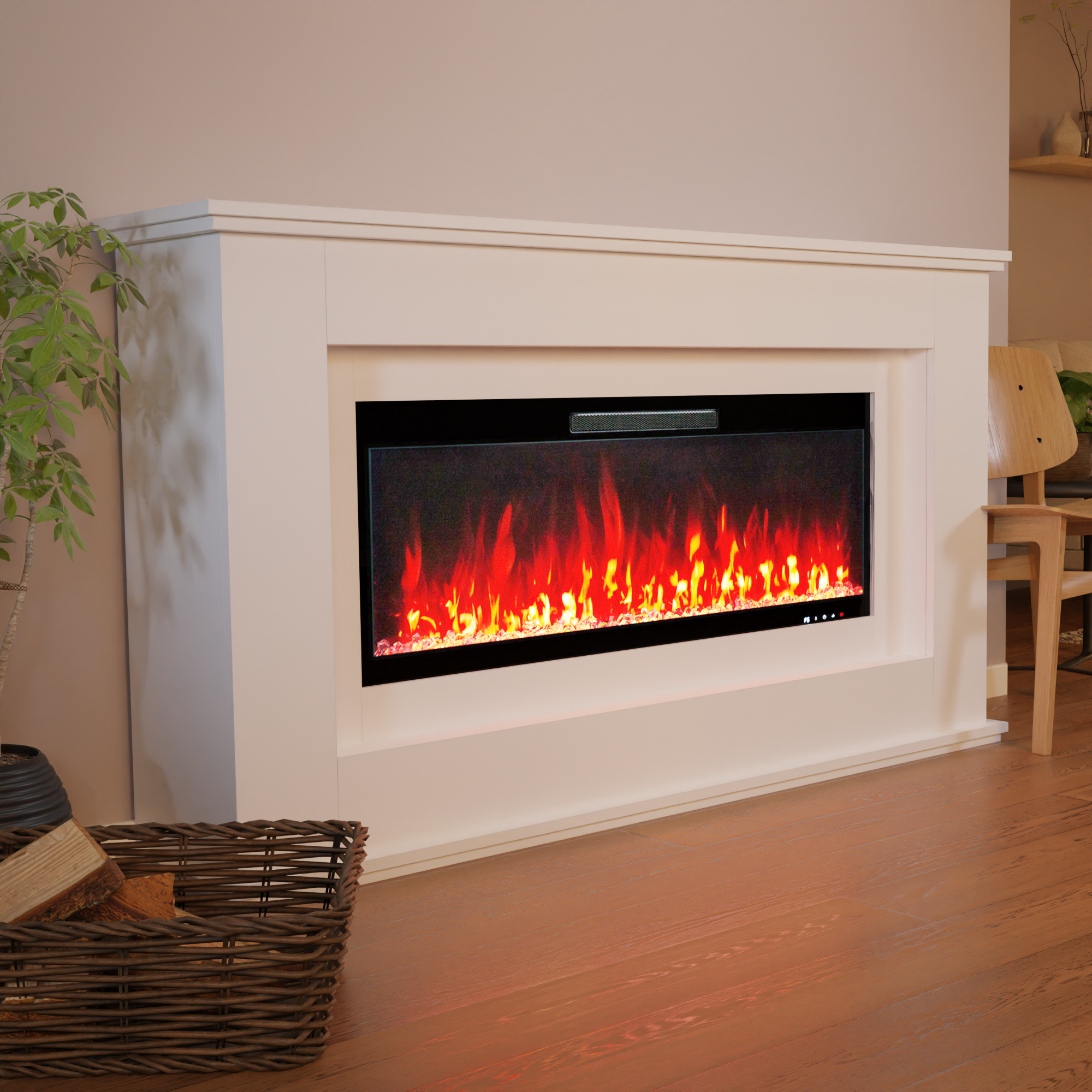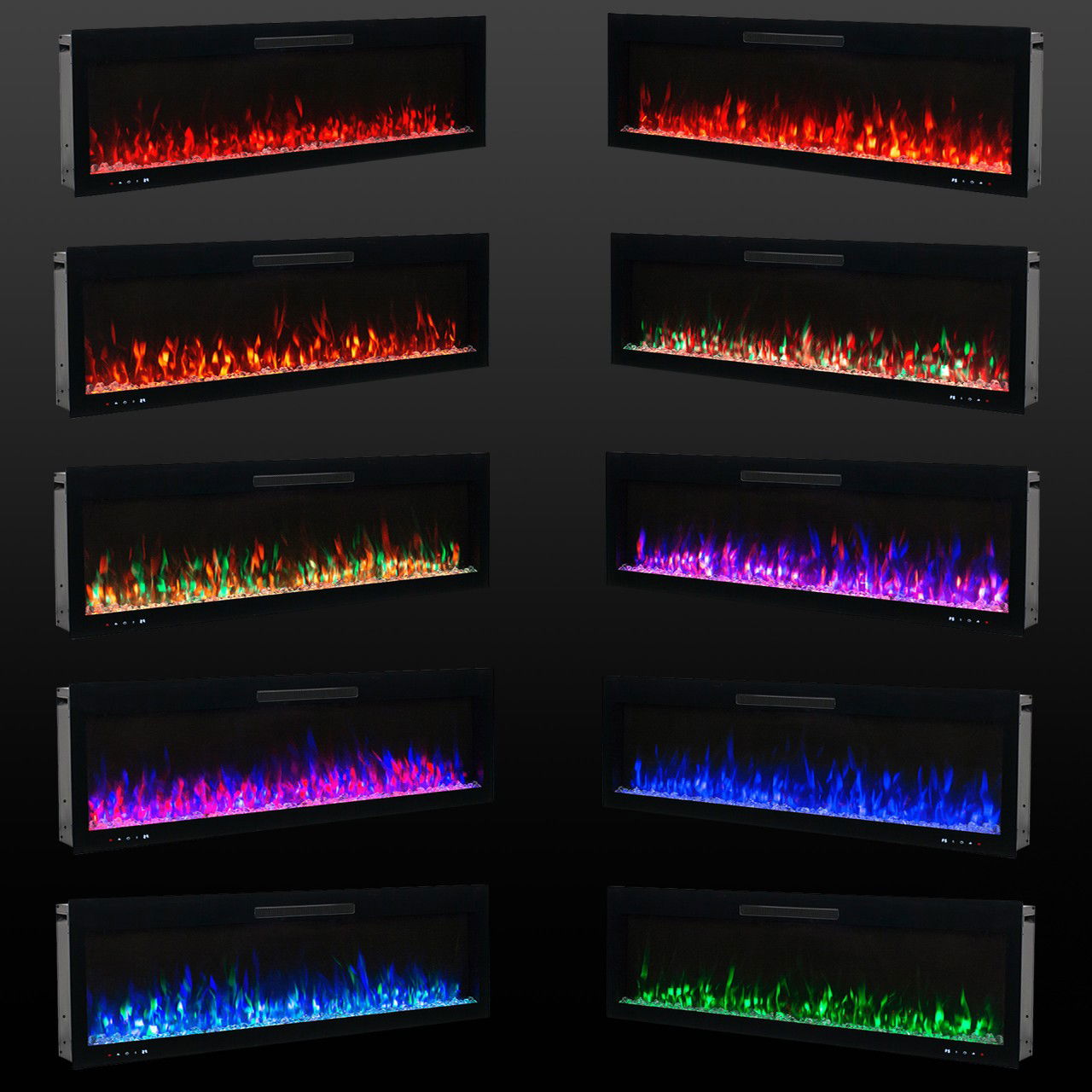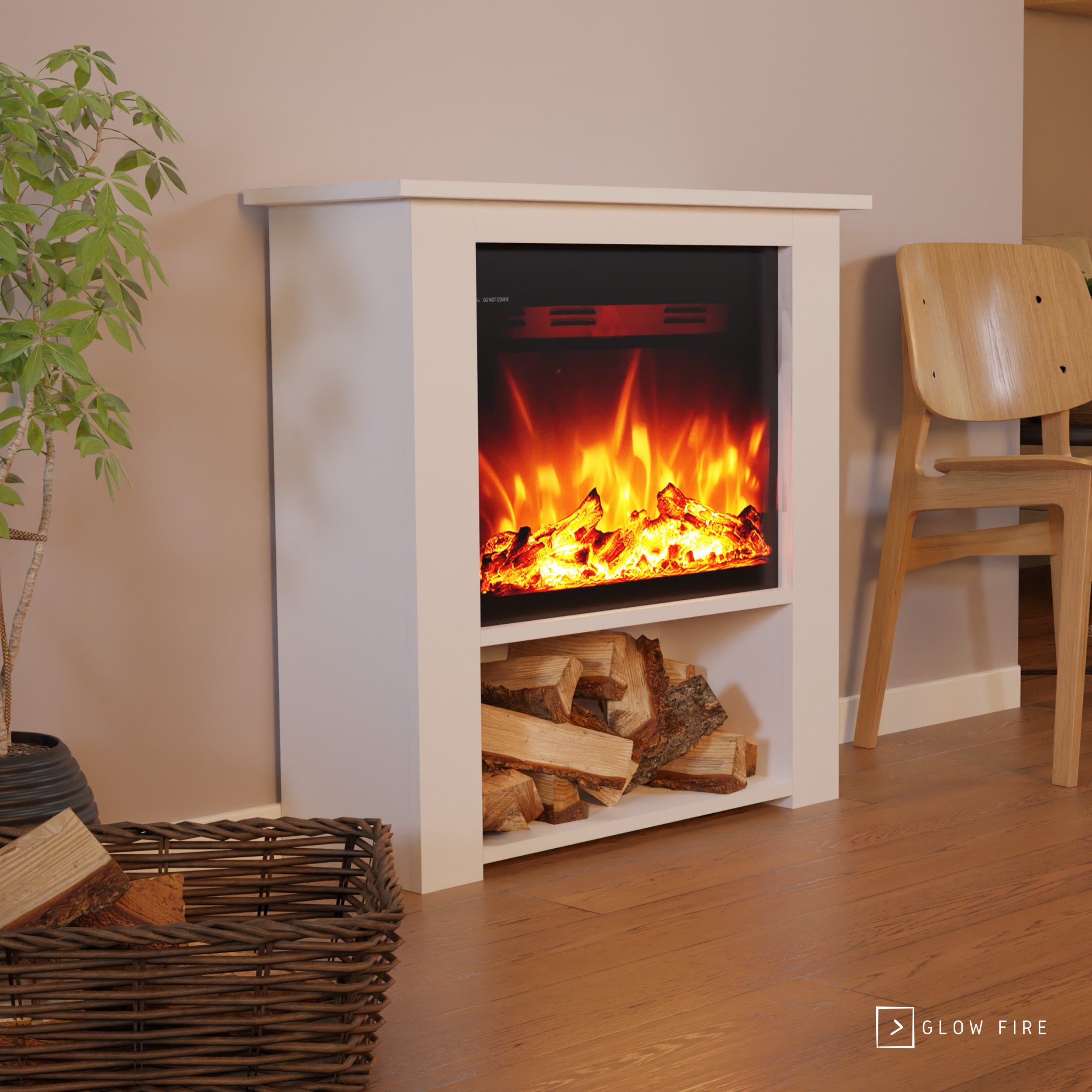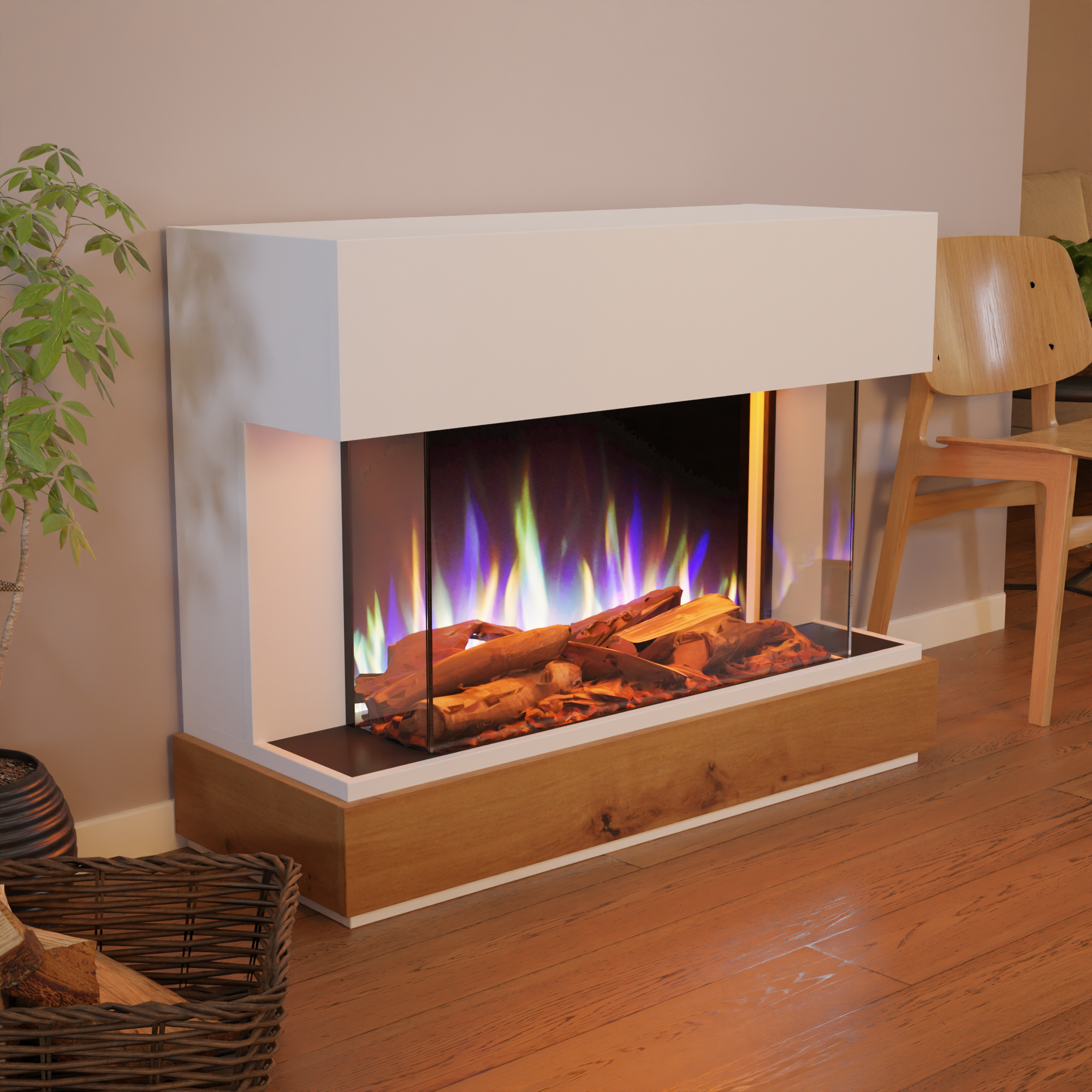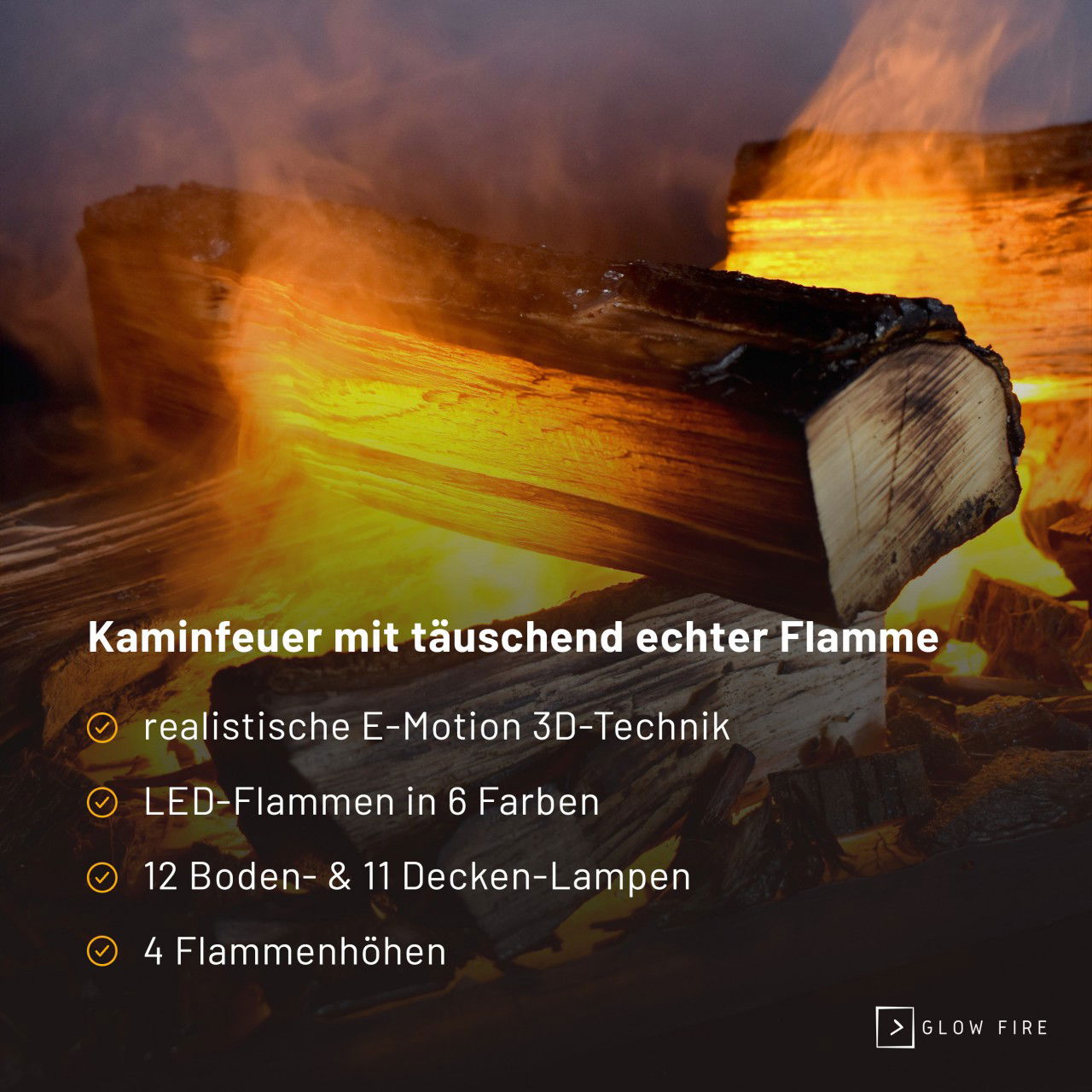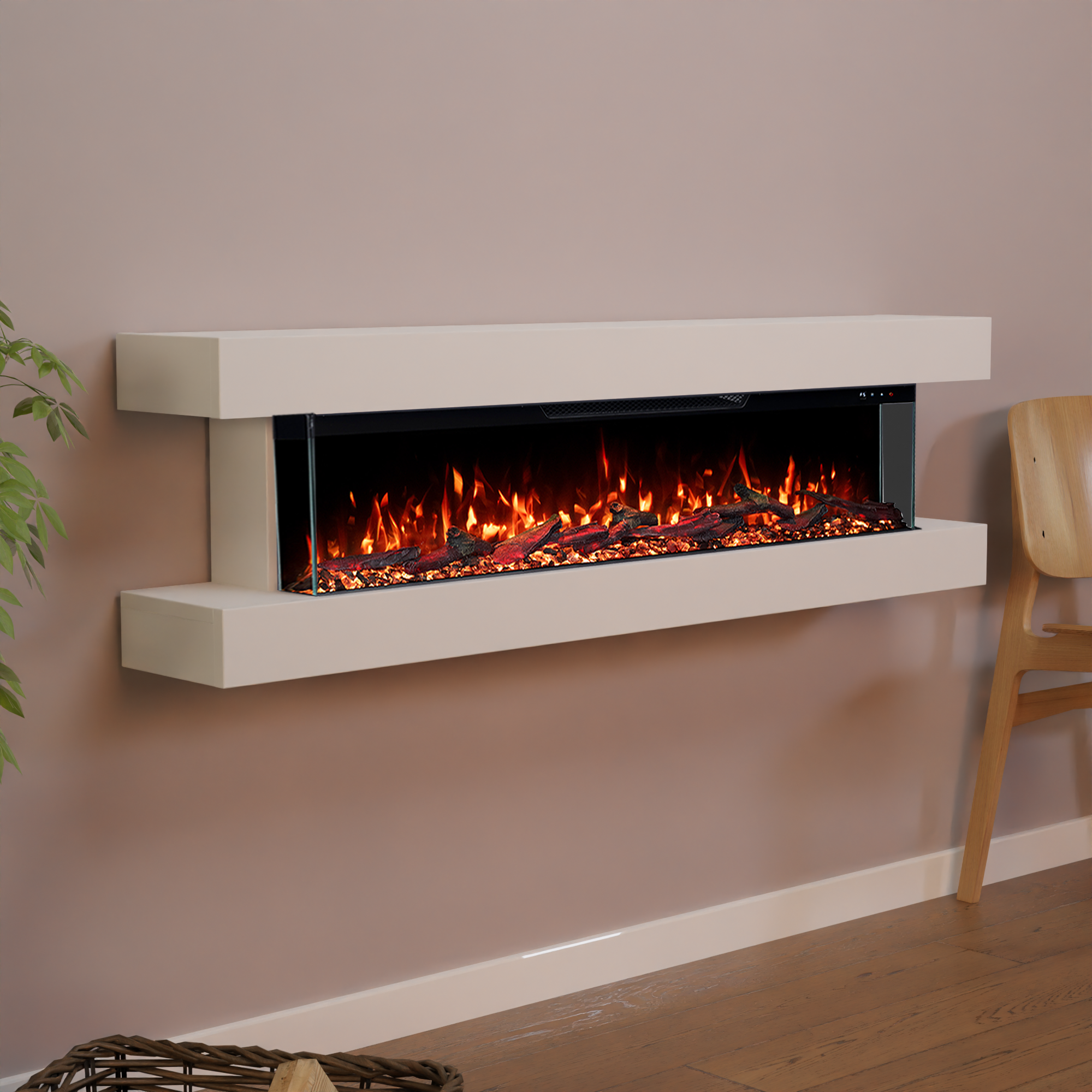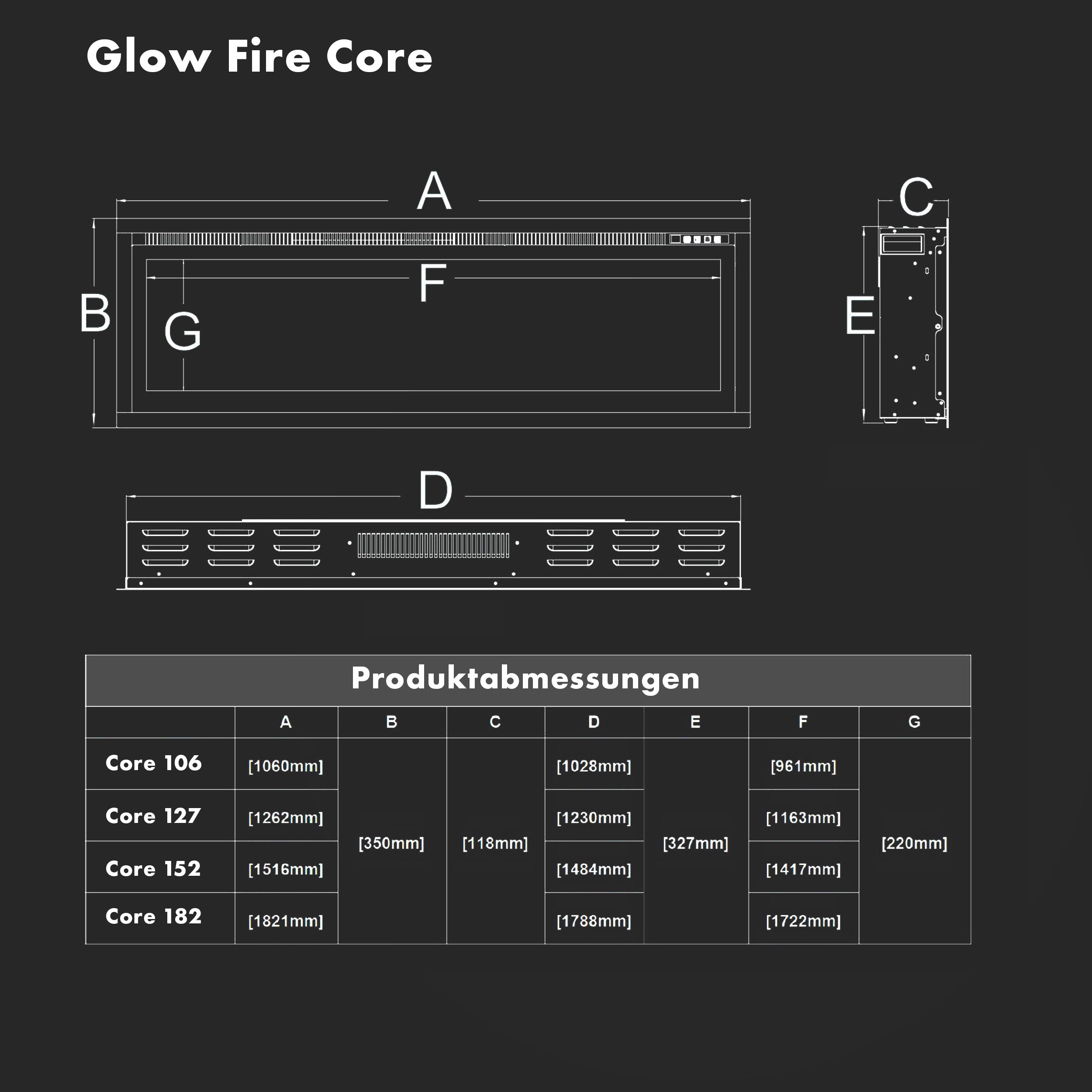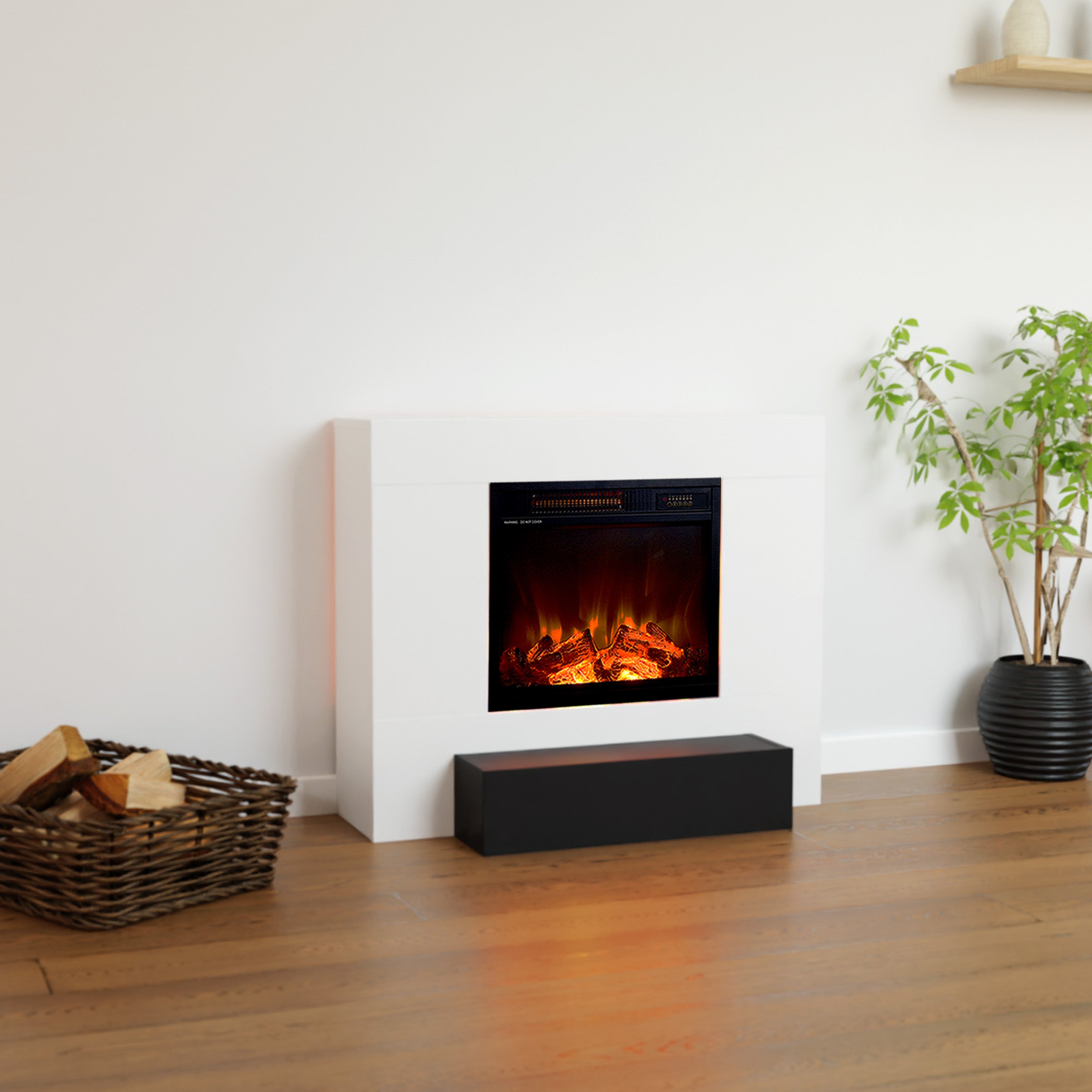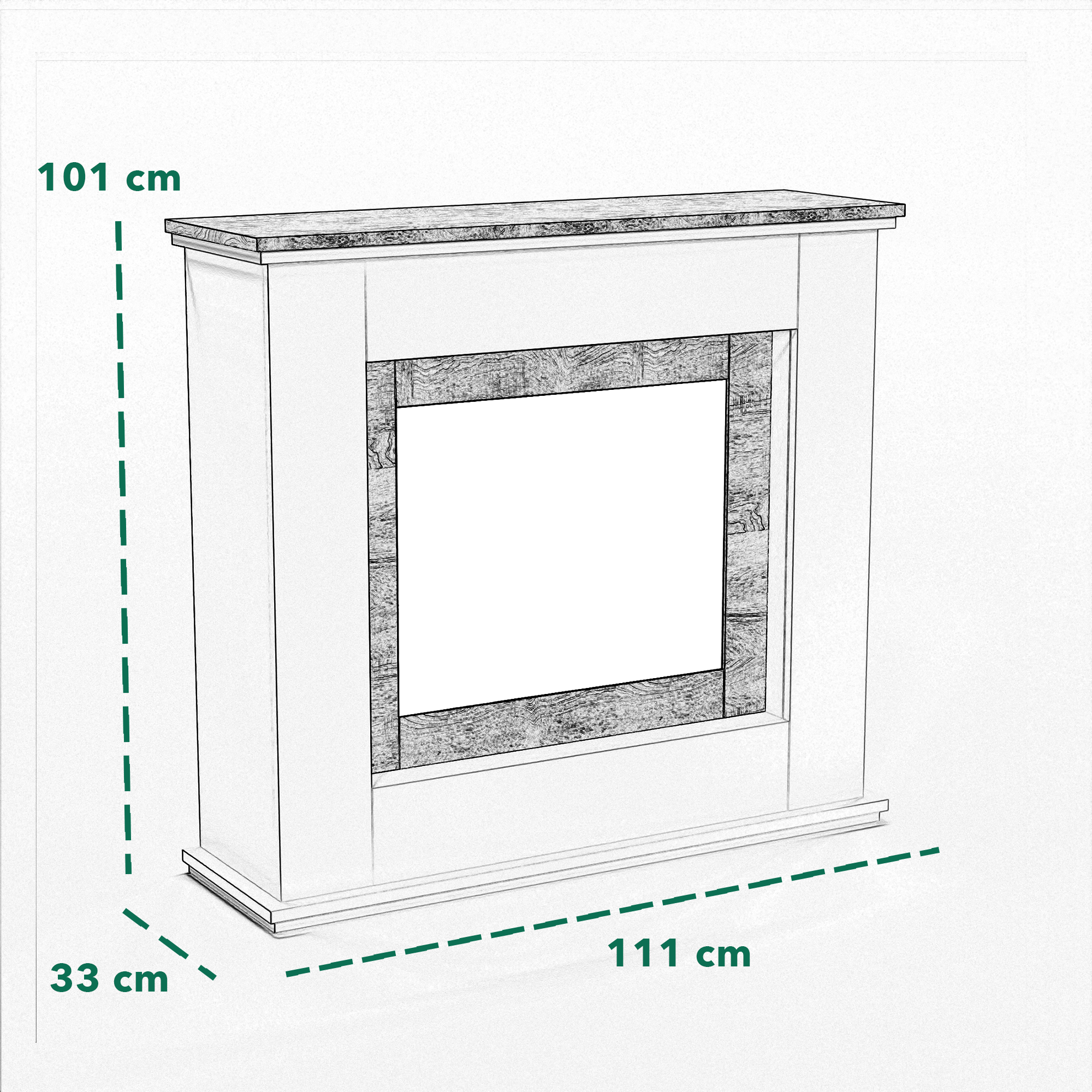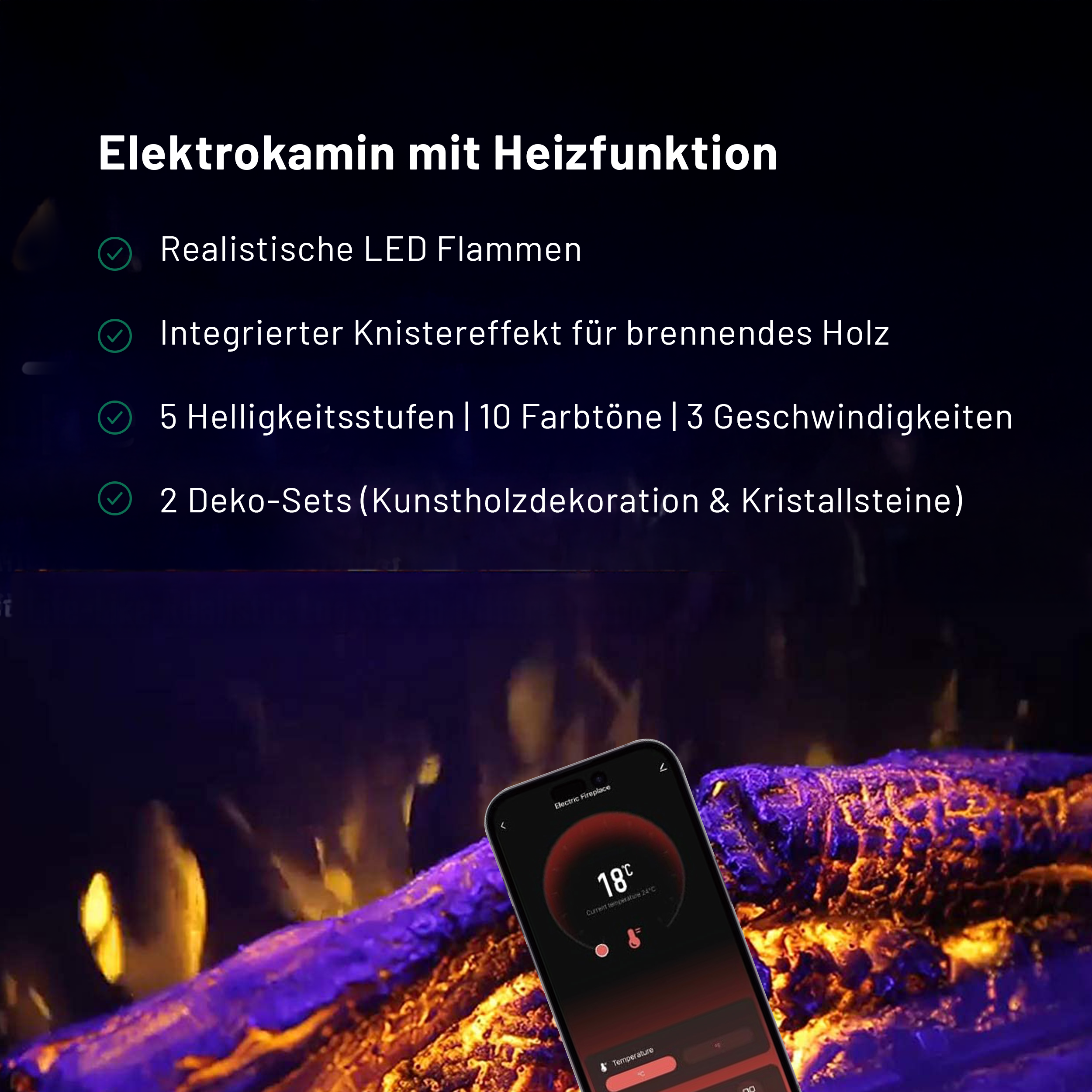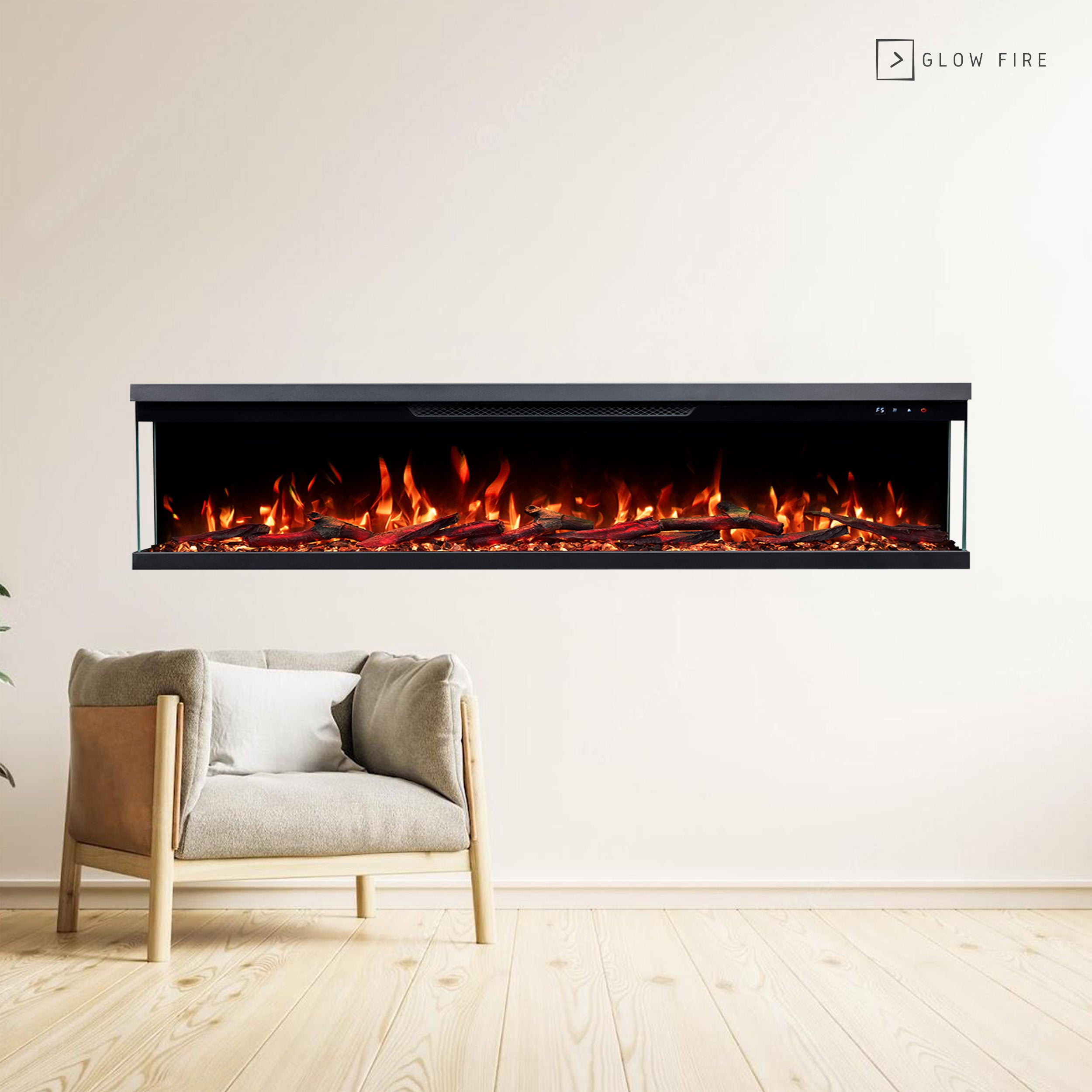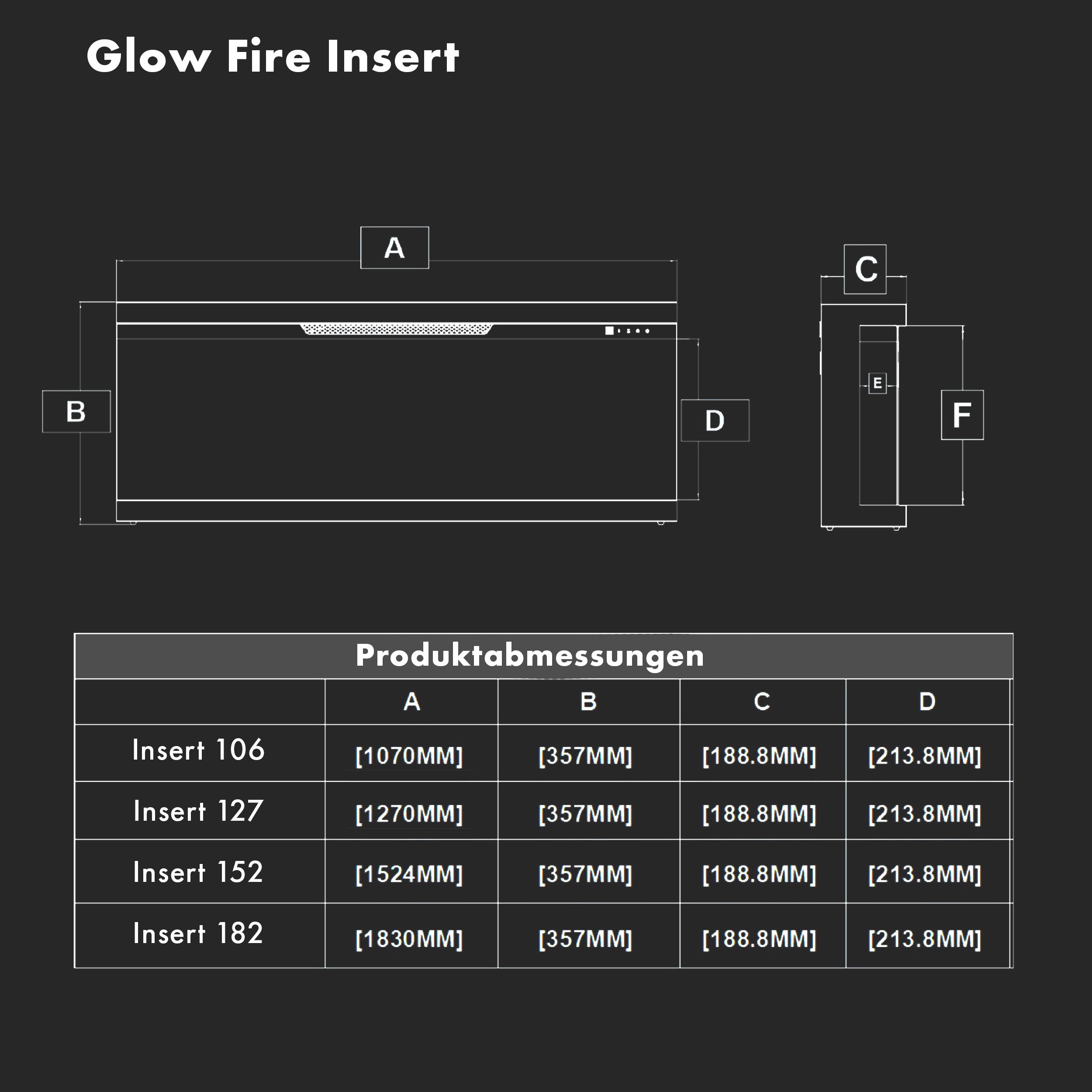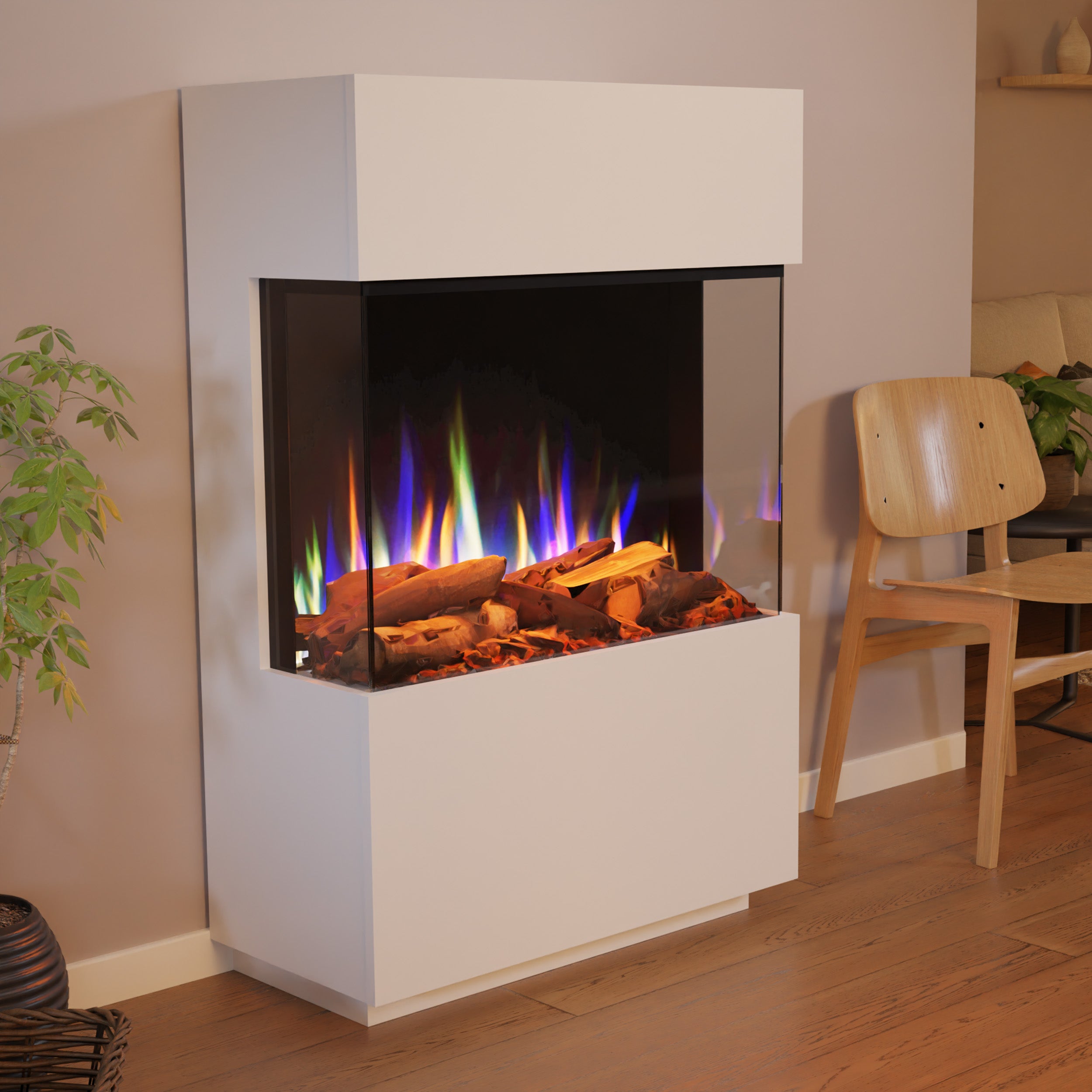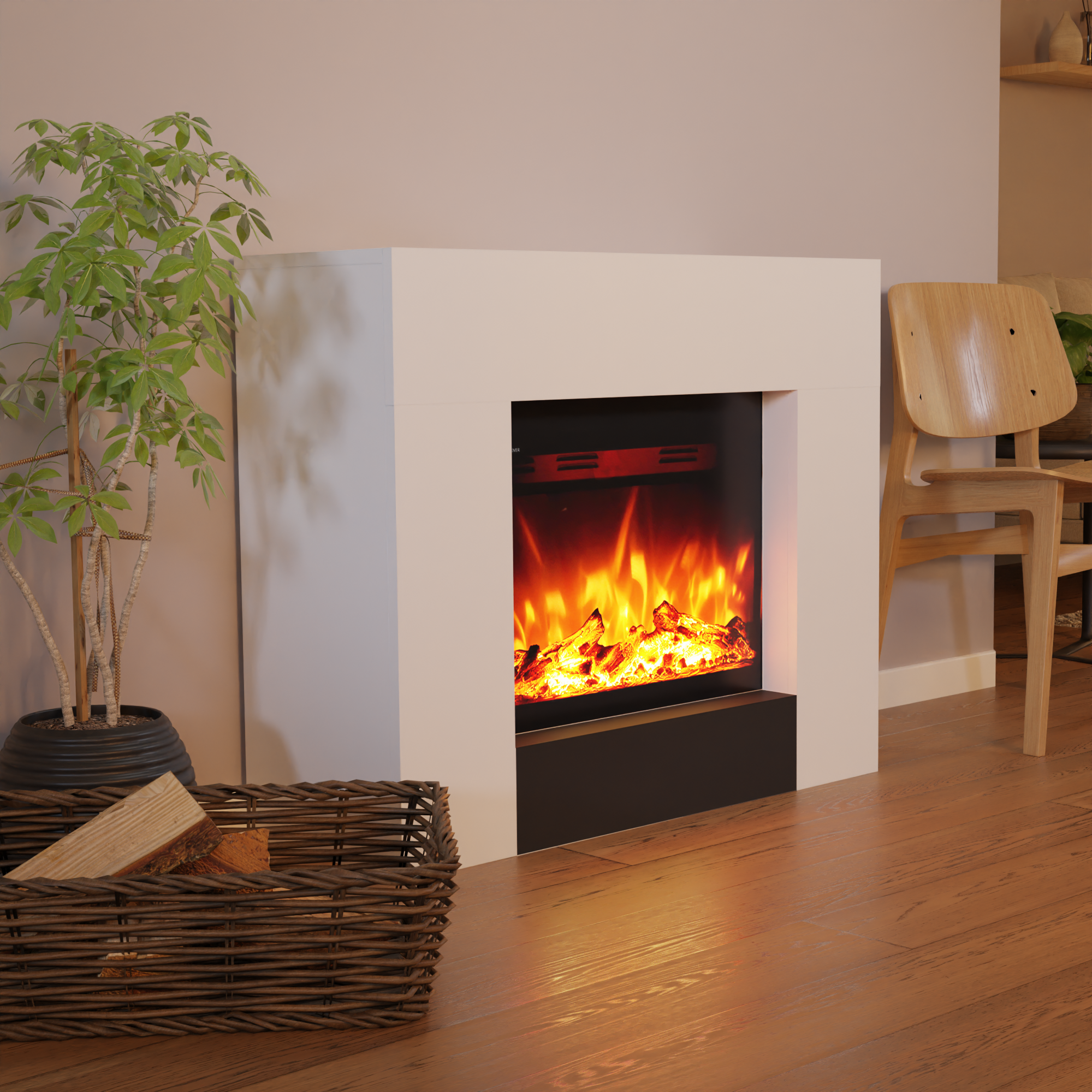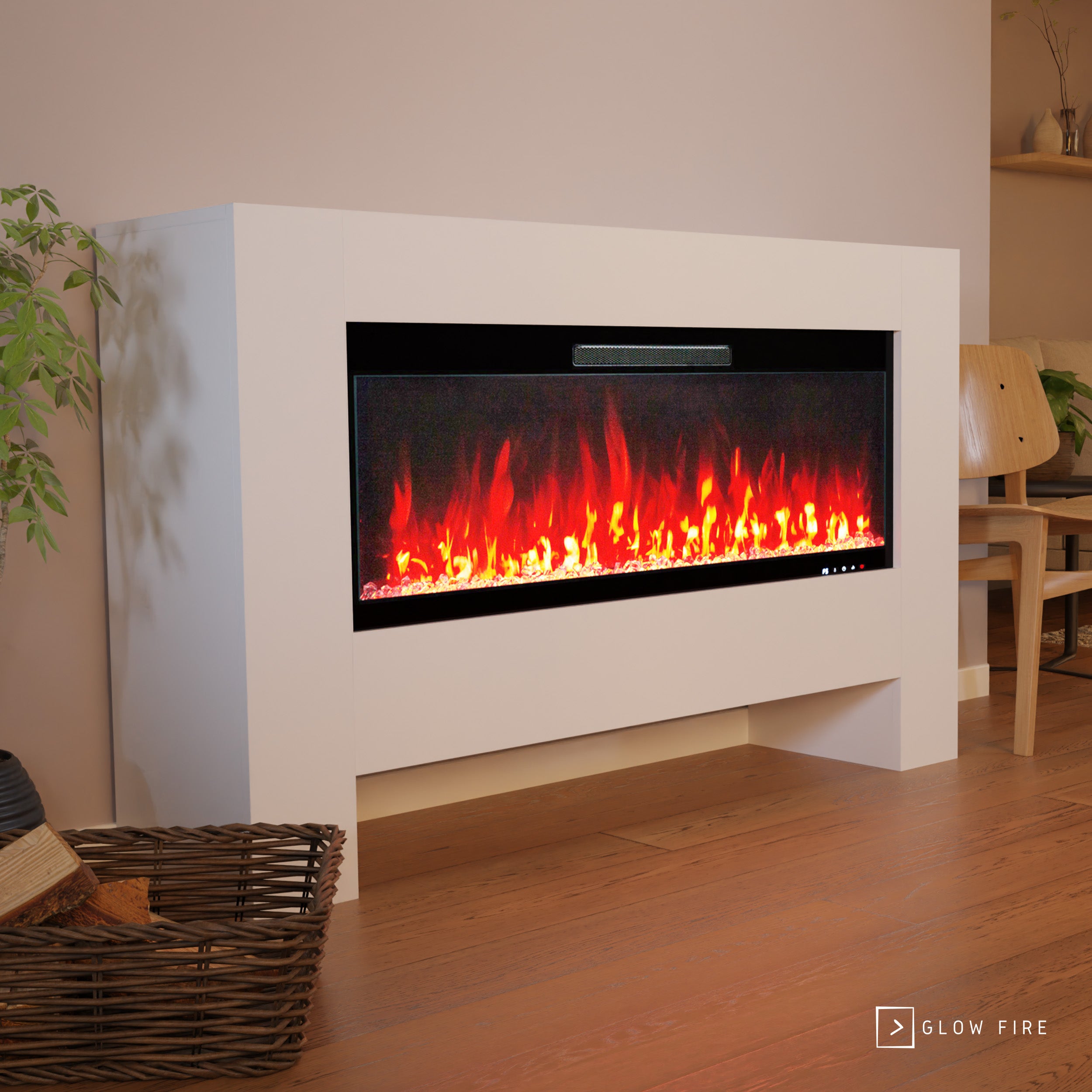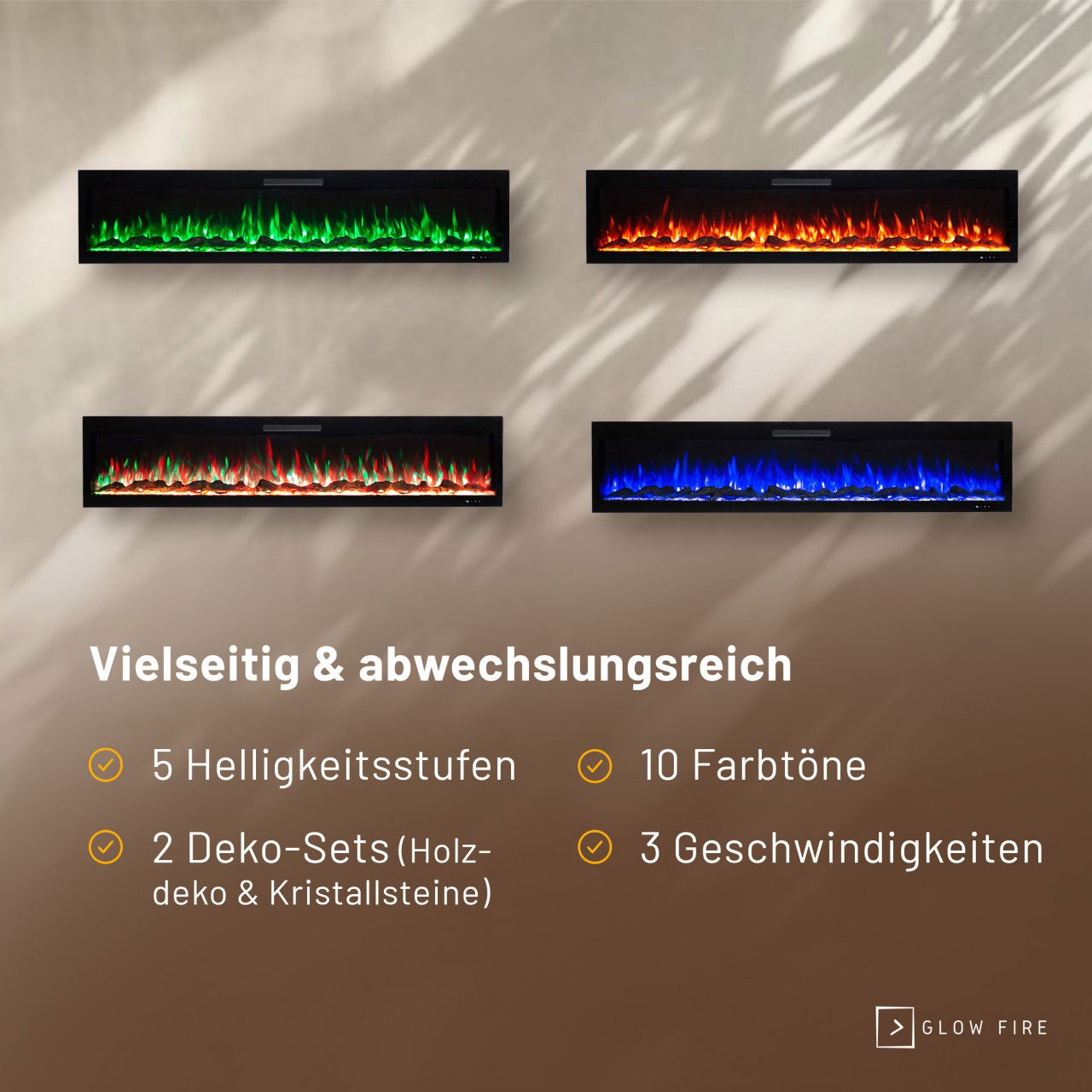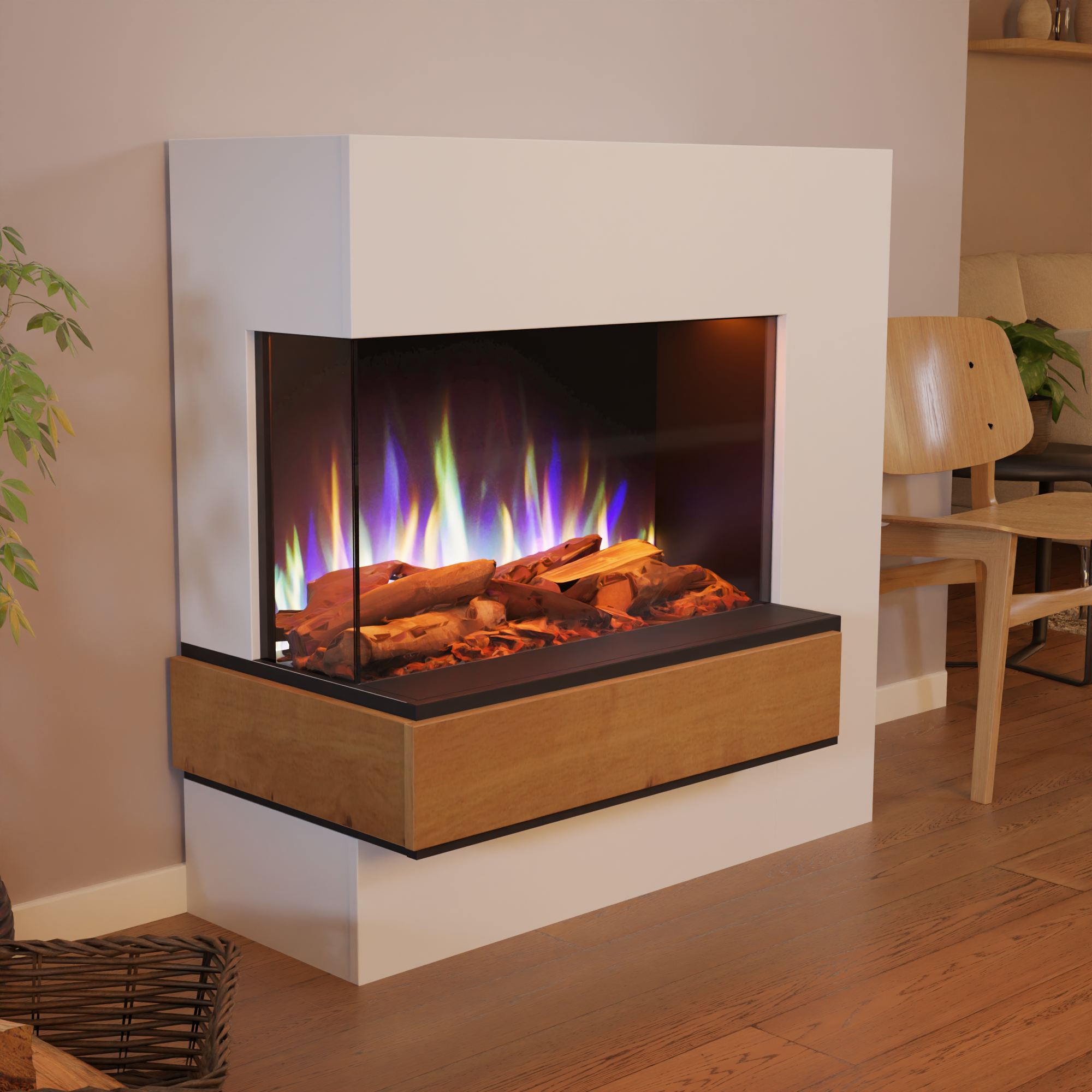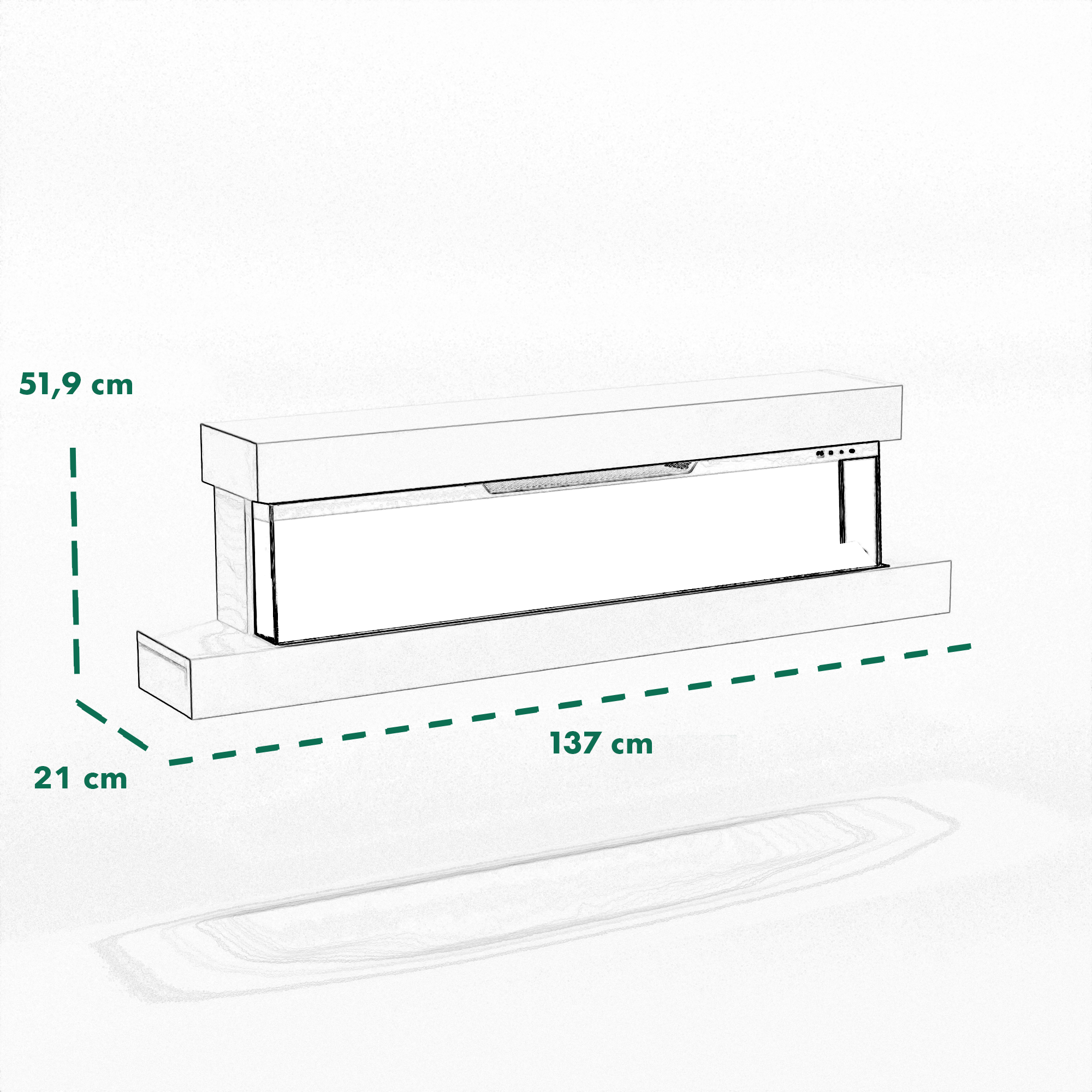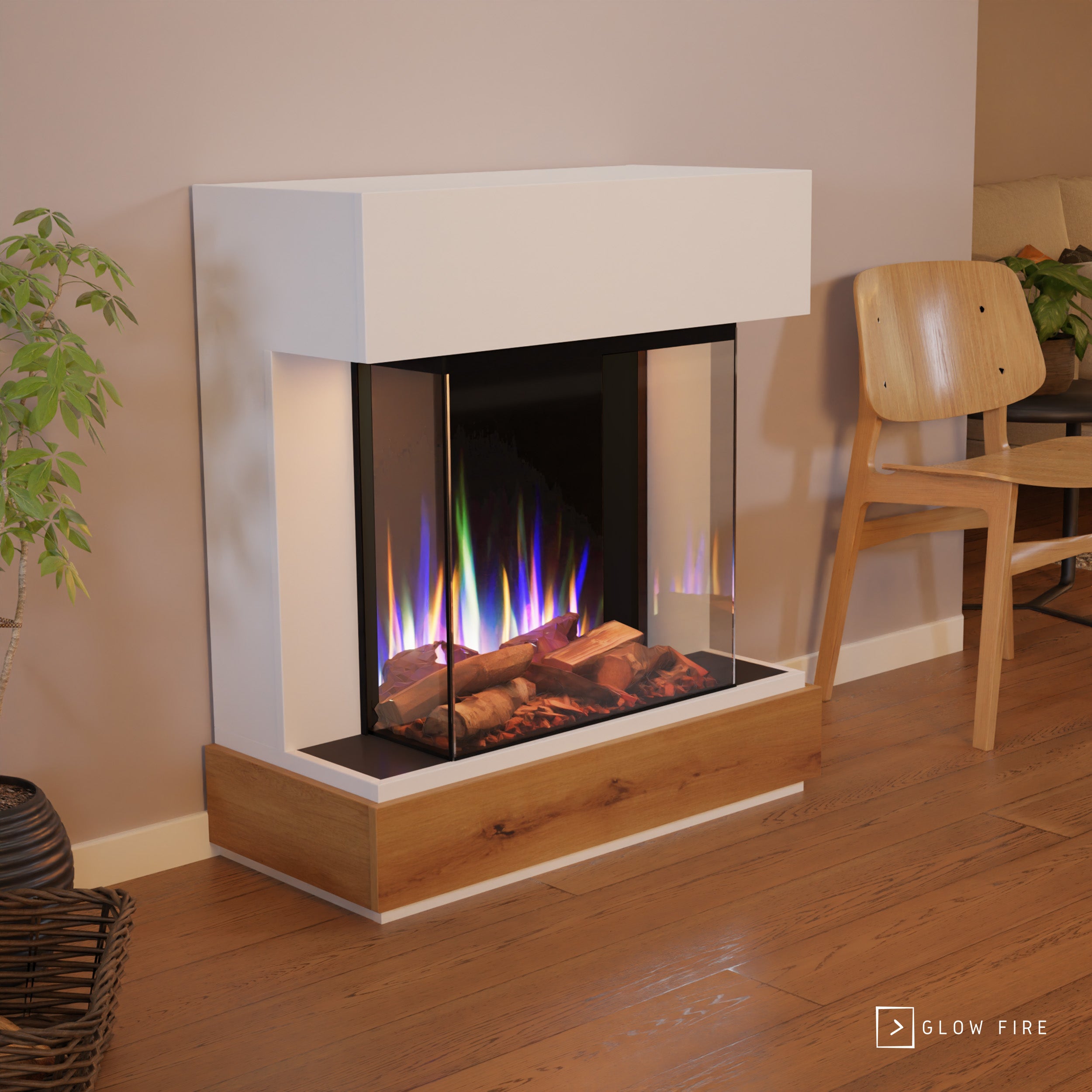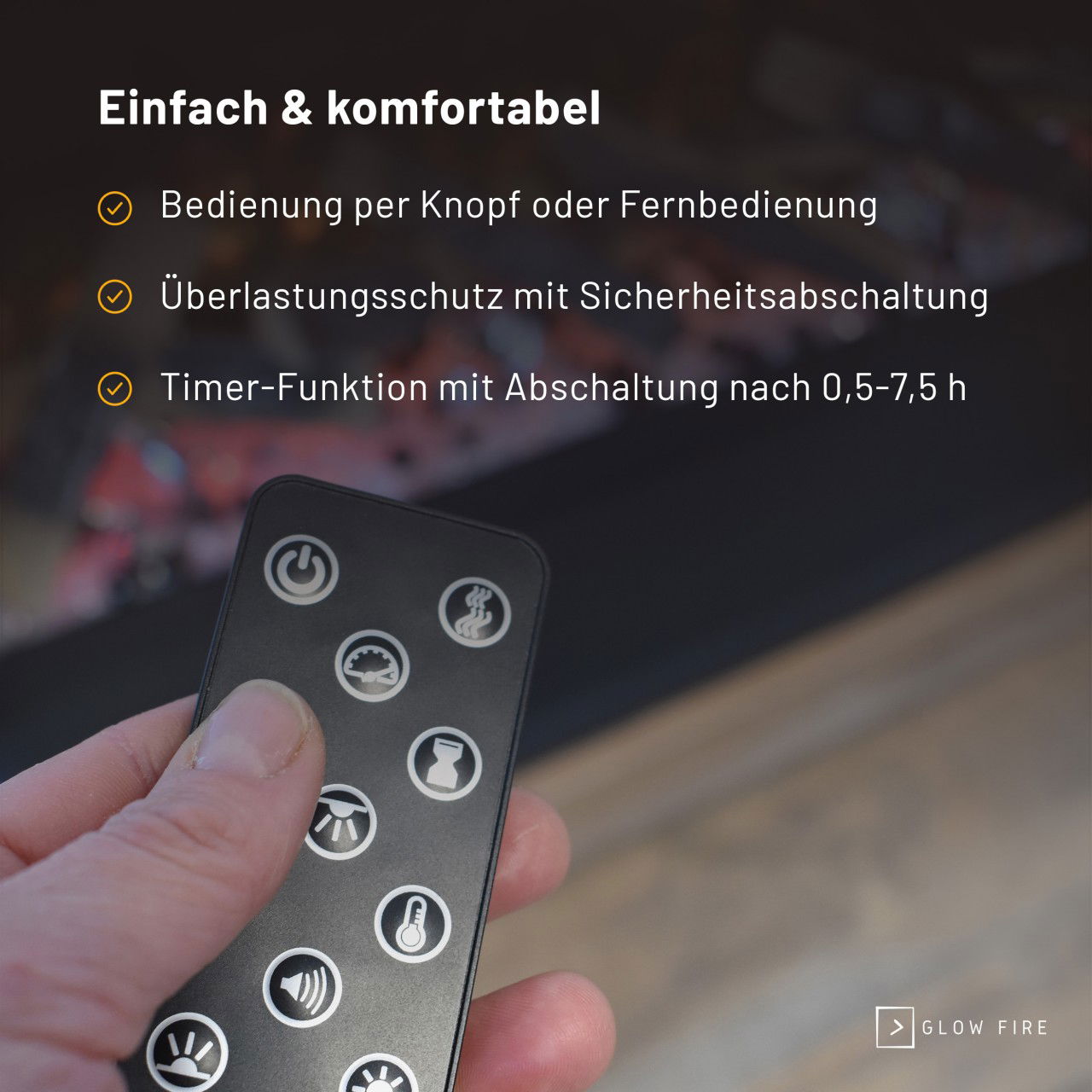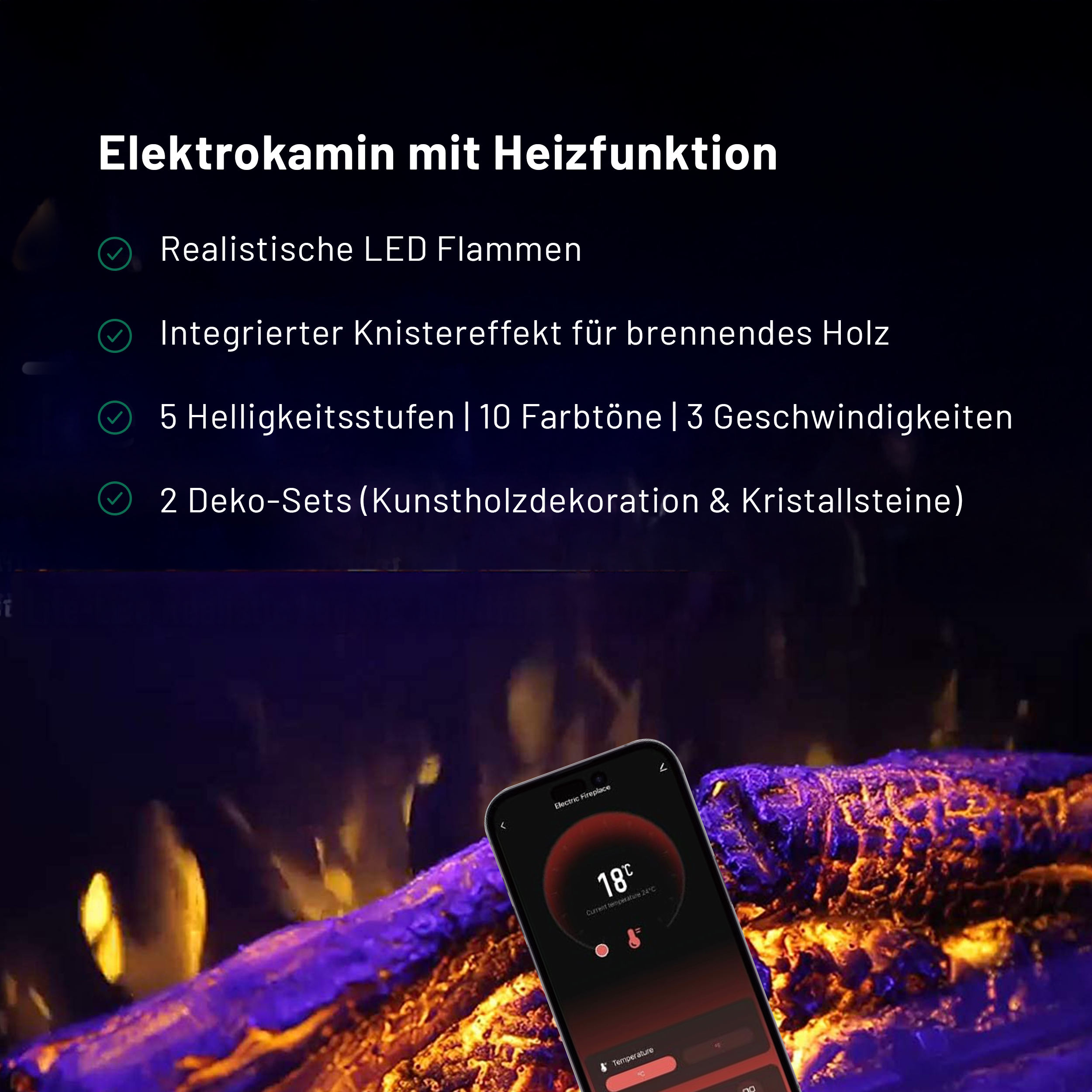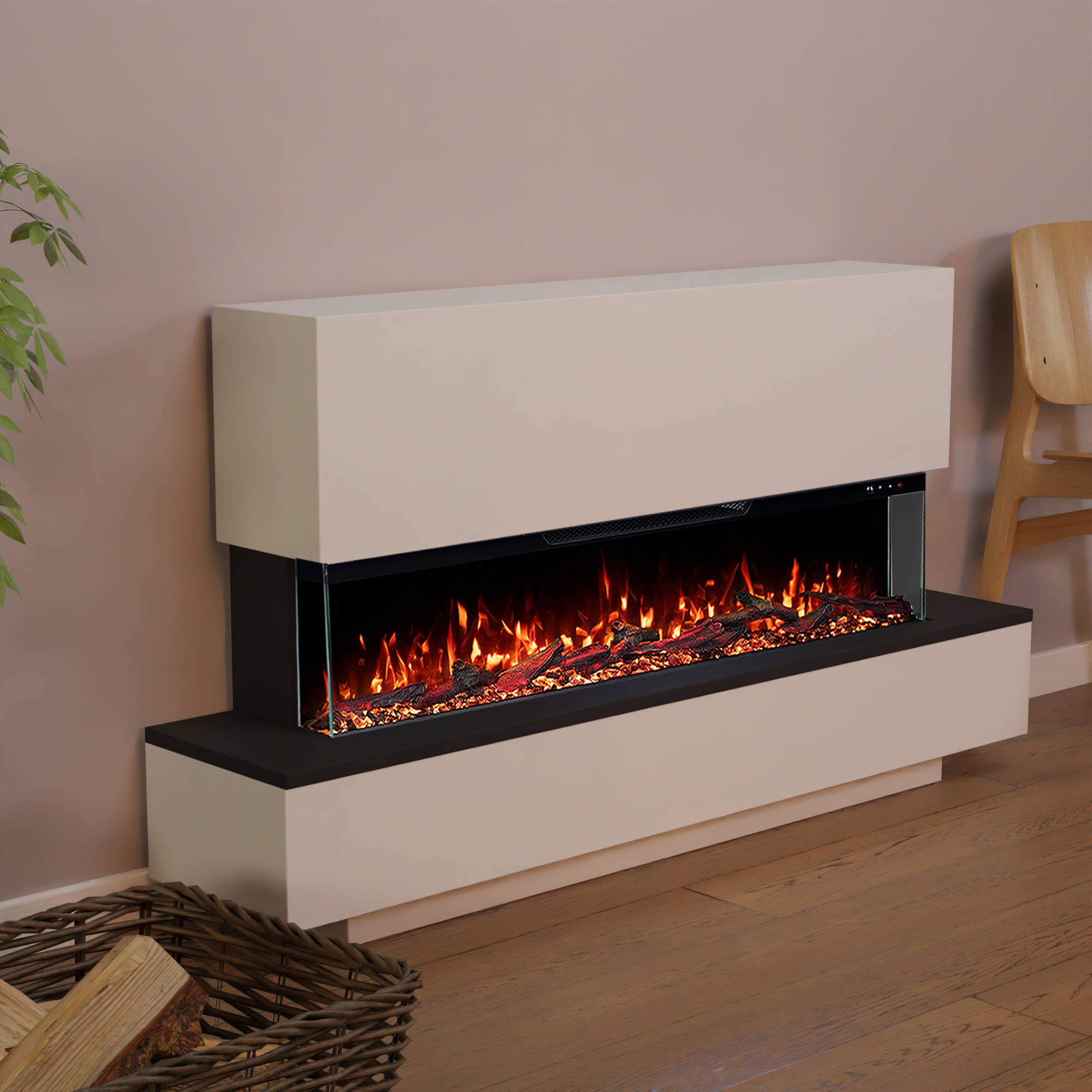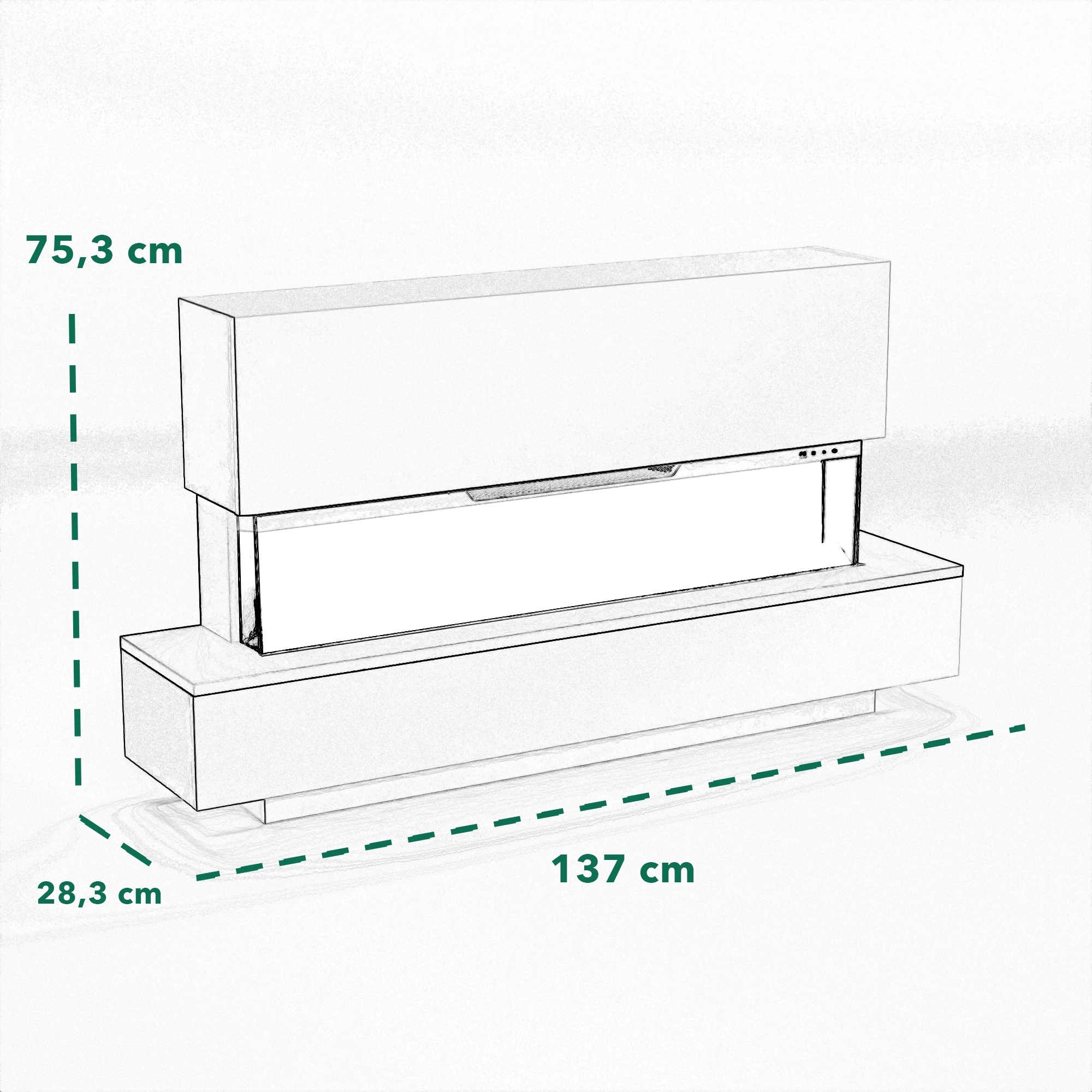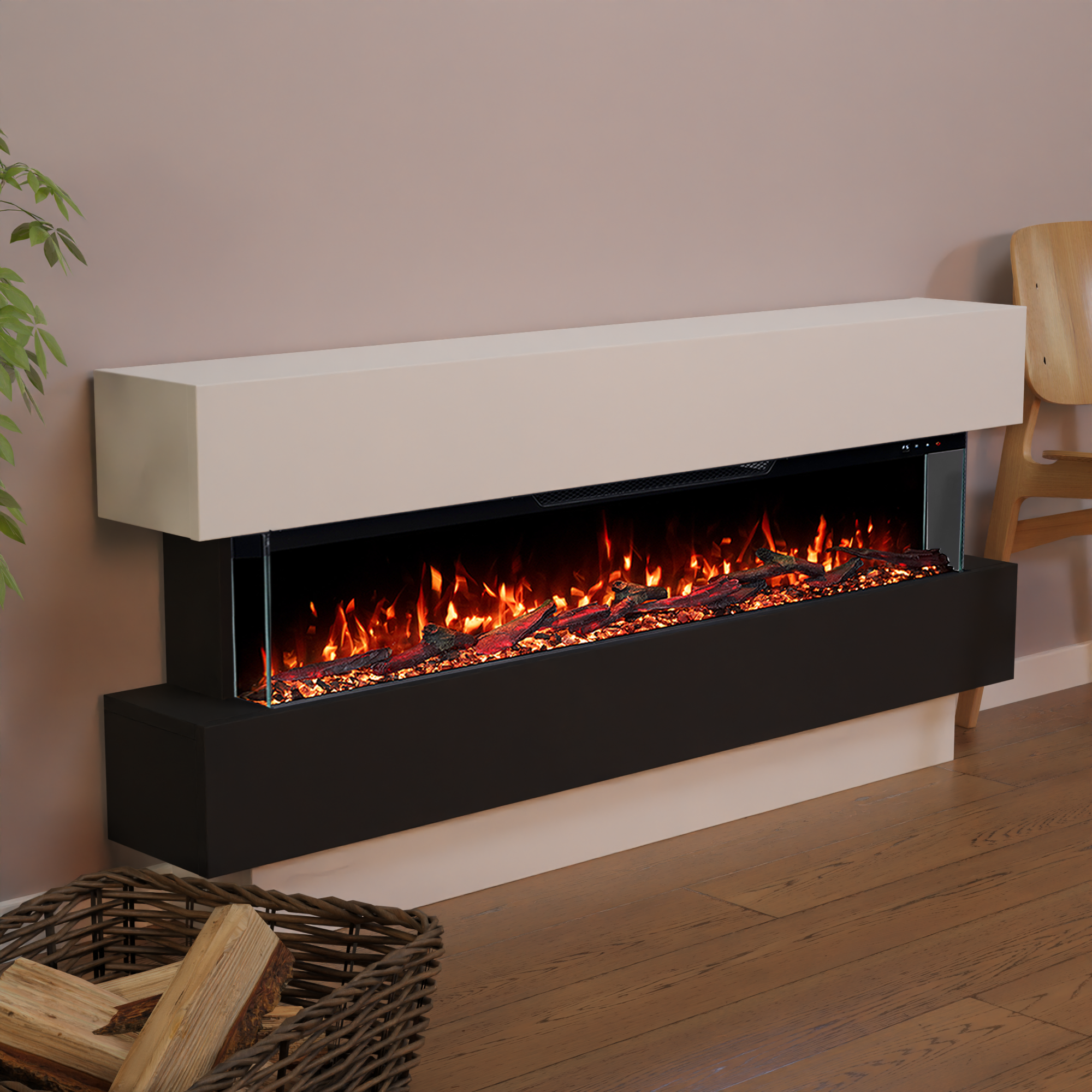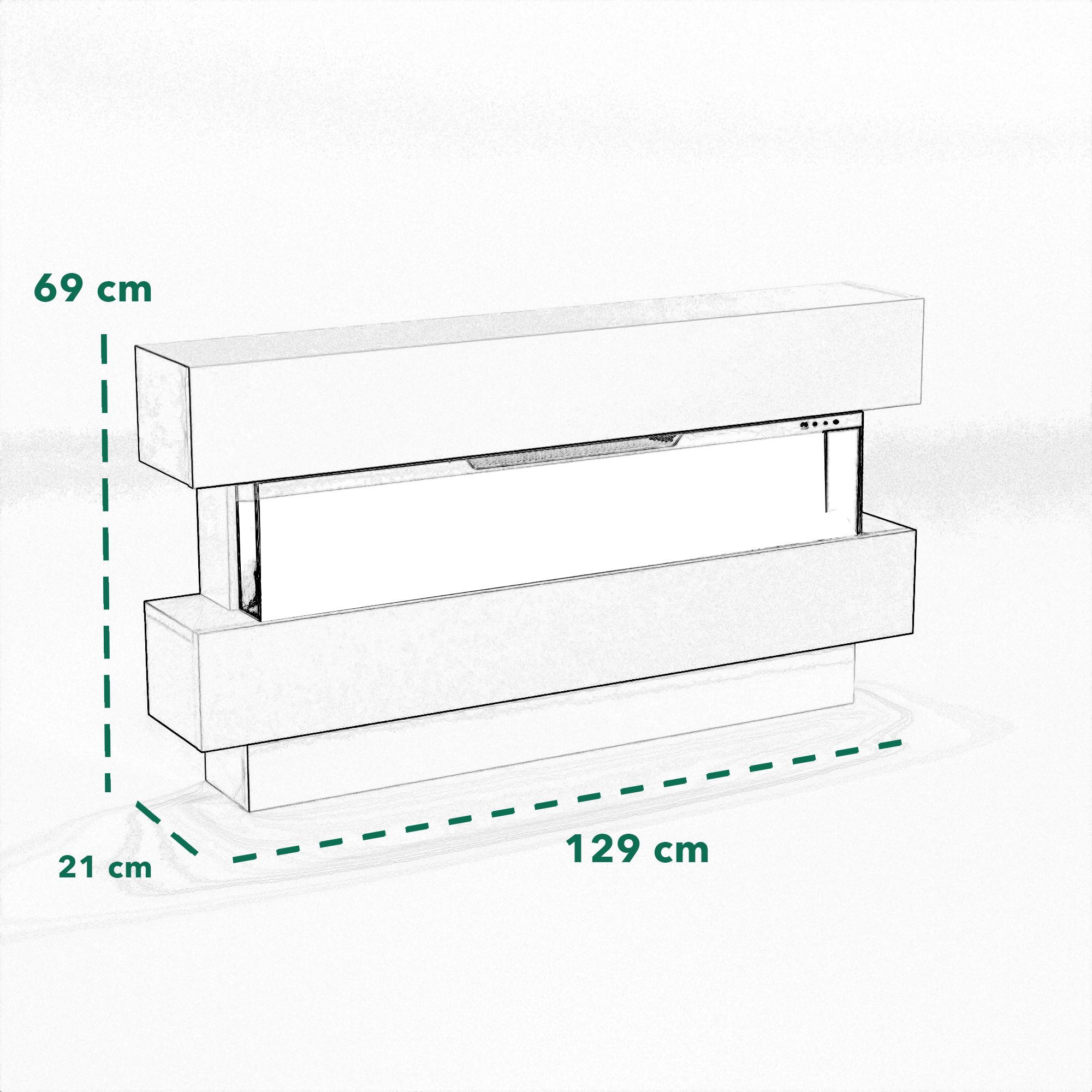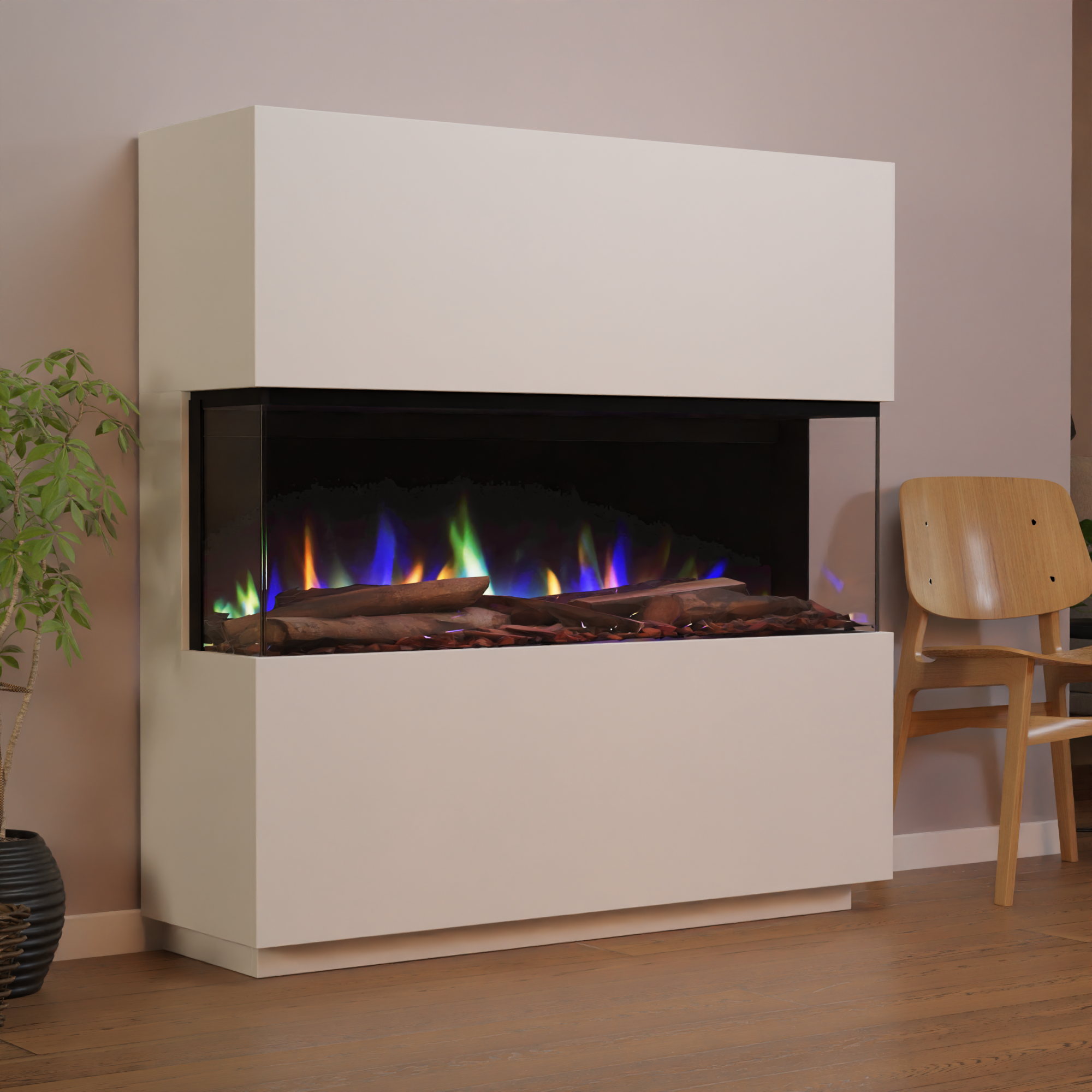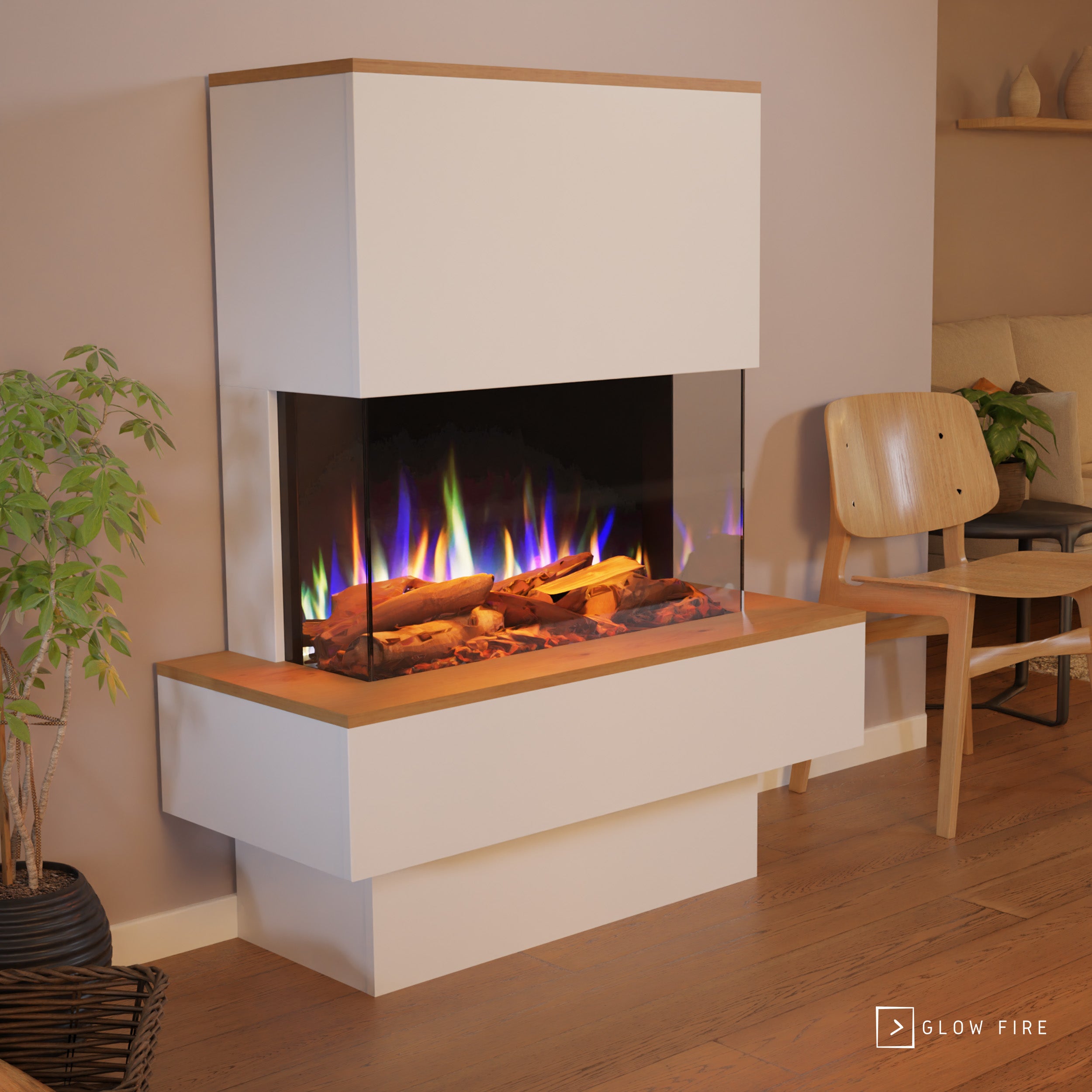Electric fireplace
The modern solution for stylish warmth in your home
Electric fireplaces have gained popularity in recent years as a practical and clean alternative to traditional wood-burning fireplaces. The technology behind electric fireplaces combines optical effects with electric heat to simulate the experience of a realistic fireplace without the need for real fire or fuel.
Electric fireplace
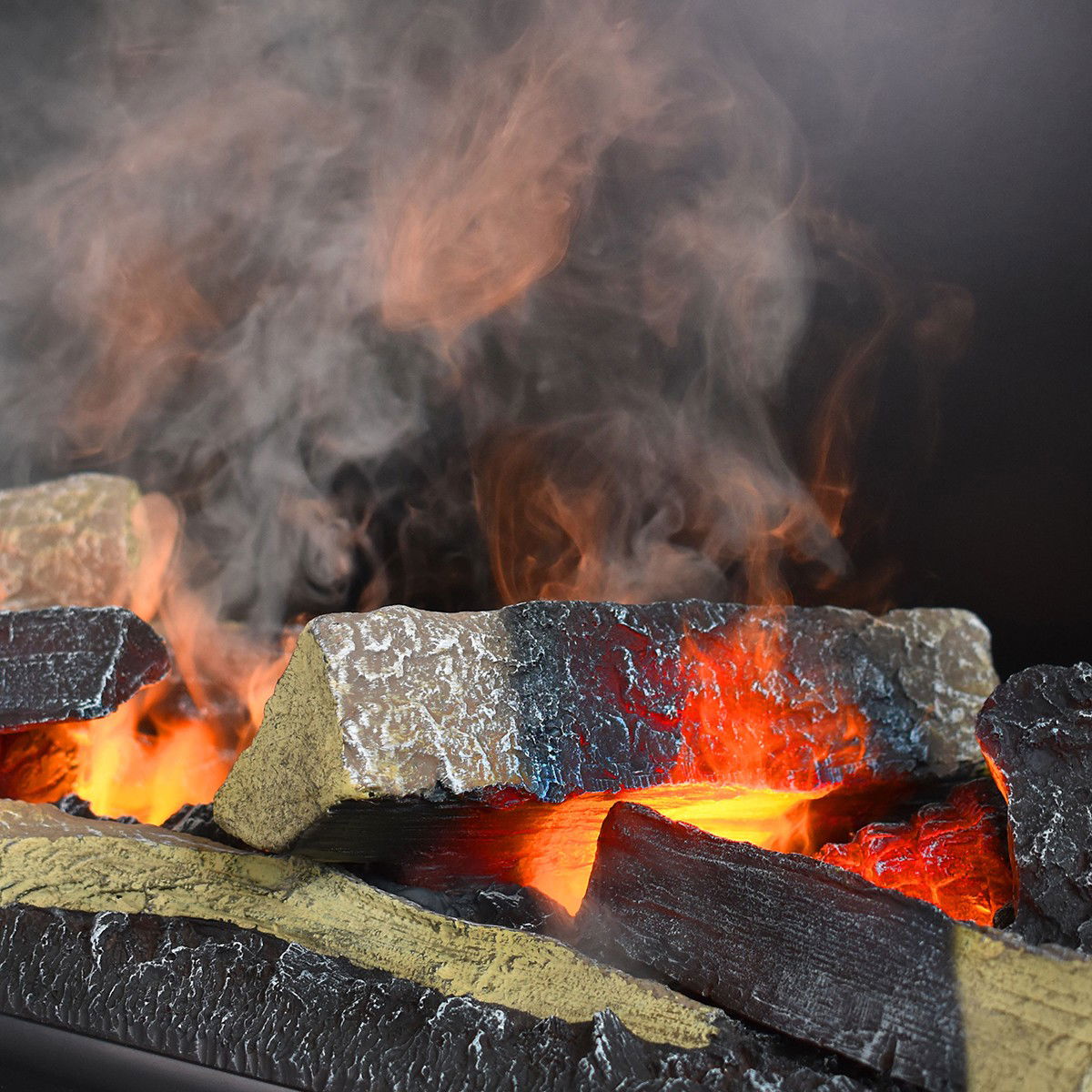
Electric fireplaces are available in various designs, which differ in their construction and installation
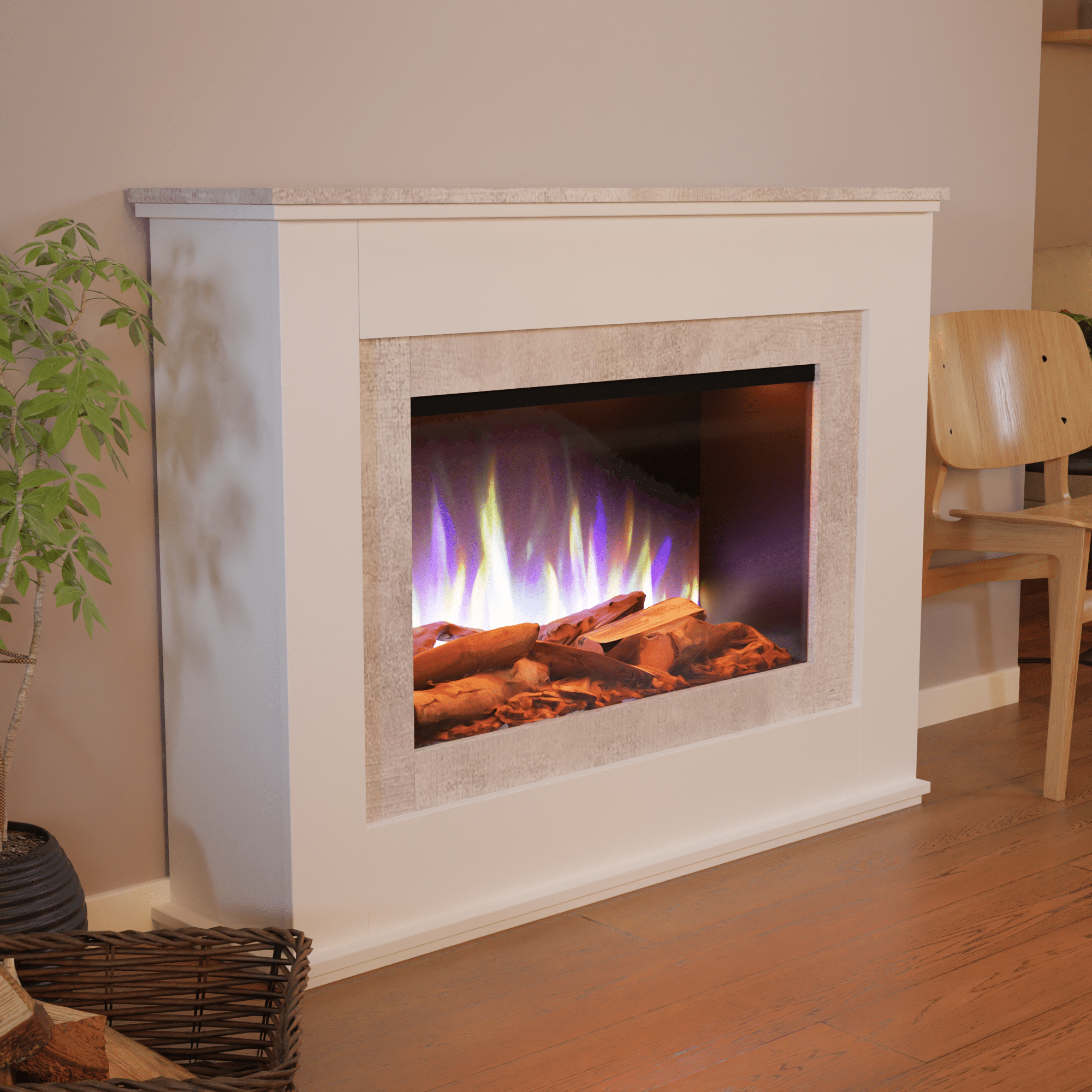
These models can be placed freely in the room like pieces of furniture and do not require any special installation.
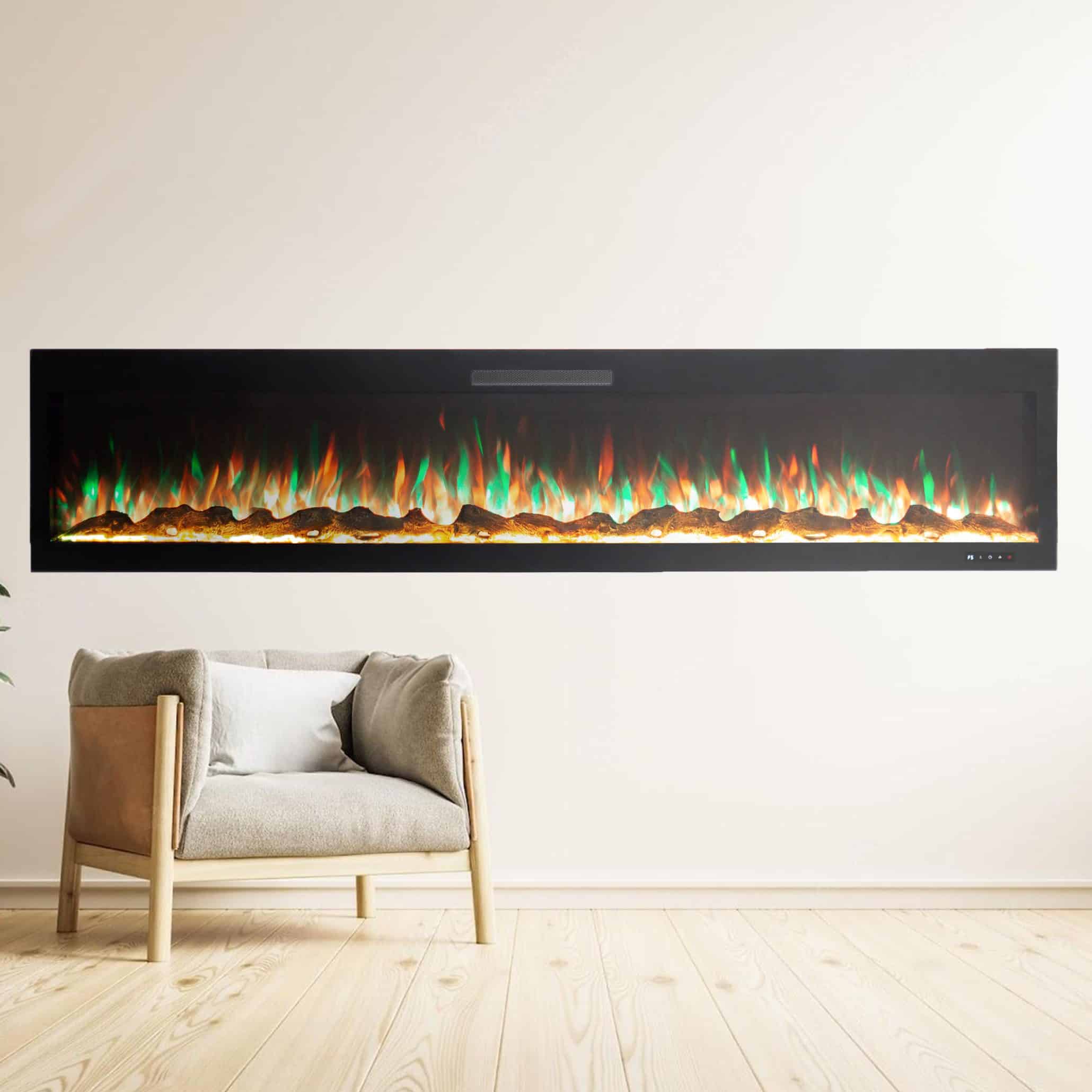
These are installed into walls or existing fireplace openings, blending harmoniously into the room's design. One example is the Glow Fire Insert. This fireplace can be integrated flush into the wall. The heat is emitted to the front.

These flat models are hung on the wall like pictures and are particularly space-saving. An example of this is the Glow Fire Screen Motion (SCM).
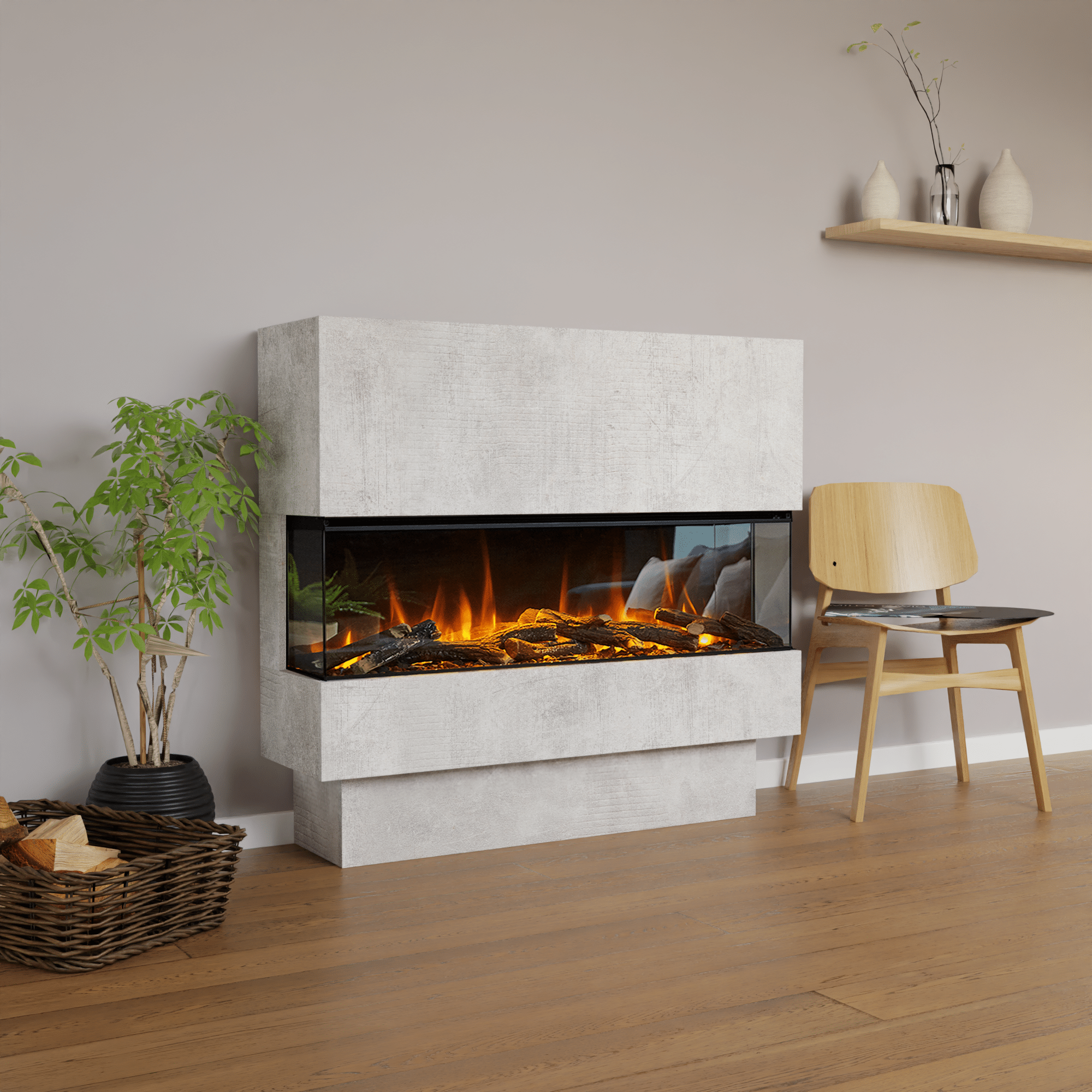
These are specially designed for installation in existing, unused fireplace openings. We can also manufacture these inserts separately as fireplace facades. These can be built by yourself, e.g., using drywall panels, or custom-made by us. After selecting the desired insert, a quote can be prepared in conjunction with a drawing. An example of a particularly beautiful fireplace insert is the New Forest from British Fires.
Electric fireplaces are available in various designs, which differ in their construction and installation
These models can be placed freely in the room like pieces of furniture and do not require any special installation.
These are installed into walls or existing fireplace openings, blending harmoniously into the room's design. One example is the Glow Fire Insert. This fireplace can be integrated flush into the wall. The heat is emitted to the front.
These flat models are hung on the wall like pictures and are particularly space-saving. An example of this is the Glow Fire Screen Motion (SCM).
These are specially designed for installation in existing, unused fireplace openings. We can also manufacture these inserts separately as fireplace facades. These can be built by yourself, e.g., using drywall panels, or custom-made by us. After selecting the desired insert, a quote can be prepared in conjunction with a drawing. An example of a particularly beautiful fireplace insert is the New Forest from British Fires.





Heating technology in electric fireplaces
The heating output of electric fireplaces is an important aspect that determines their functionality and possible uses. Electric fireplaces not only provide a pleasant visual ambiance but can also serve as an additional heat source. However, the heating output varies depending on the model, size, and intended use.
A typical electric fireplace has a heat output of 1,000 to 2,000 watts . This is sufficient to effectively heat a small to medium-sized room (up to approximately 30 m²). The heat output can be adjusted in stages on most models, often to two levels, such as 1,000 watts and 2,000 watts . This allows the user to regulate the heat output depending on the room temperature and comfort requirements.
The heating power of an electric fireplace is primarily intended for transitional seasons or as a supplementary heat source in colder rooms. An electric fireplace is ideal for quickly heating small to medium-sized rooms, such as bedrooms, living rooms, or offices. However, in larger rooms, its heating power reaches its limits. In these cases, an electric fireplace cannot completely replace the main heating system, but can only serve as a supplementary function.
As a rule of thumb, you need about 100 watts of heating power per square meter of room. A 2,000-watt electric fireplace can theoretically keep a room of up to 20 m² comfortably warm, while a 1,000-watt unit is suitable for smaller rooms up to 10 m² . However, the actual heating power depends on factors such as the room's insulation, ceiling height, and outside temperatures.
Efficiency and energy consumption
Electric fireplaces are very efficient because almost all of the electrical energy supplied is converted into heat. Unlike gas or wood-burning fireplaces, where heat can escape through the chimney, the heat from electric fireplaces remains entirely within the room.
However, energy consumption should be considered: A 2,000-watt electric fireplace consumes 2 kilowatt-hours (kWh) of electricity per hour of operation. With rising energy prices, this can lead to higher electricity costs depending on the duration of use. Many users therefore use electric fireplaces as supplementary heating to provide additional warmth in certain rooms or at certain times (e.g., in the evening) without having to turn up the central heating.
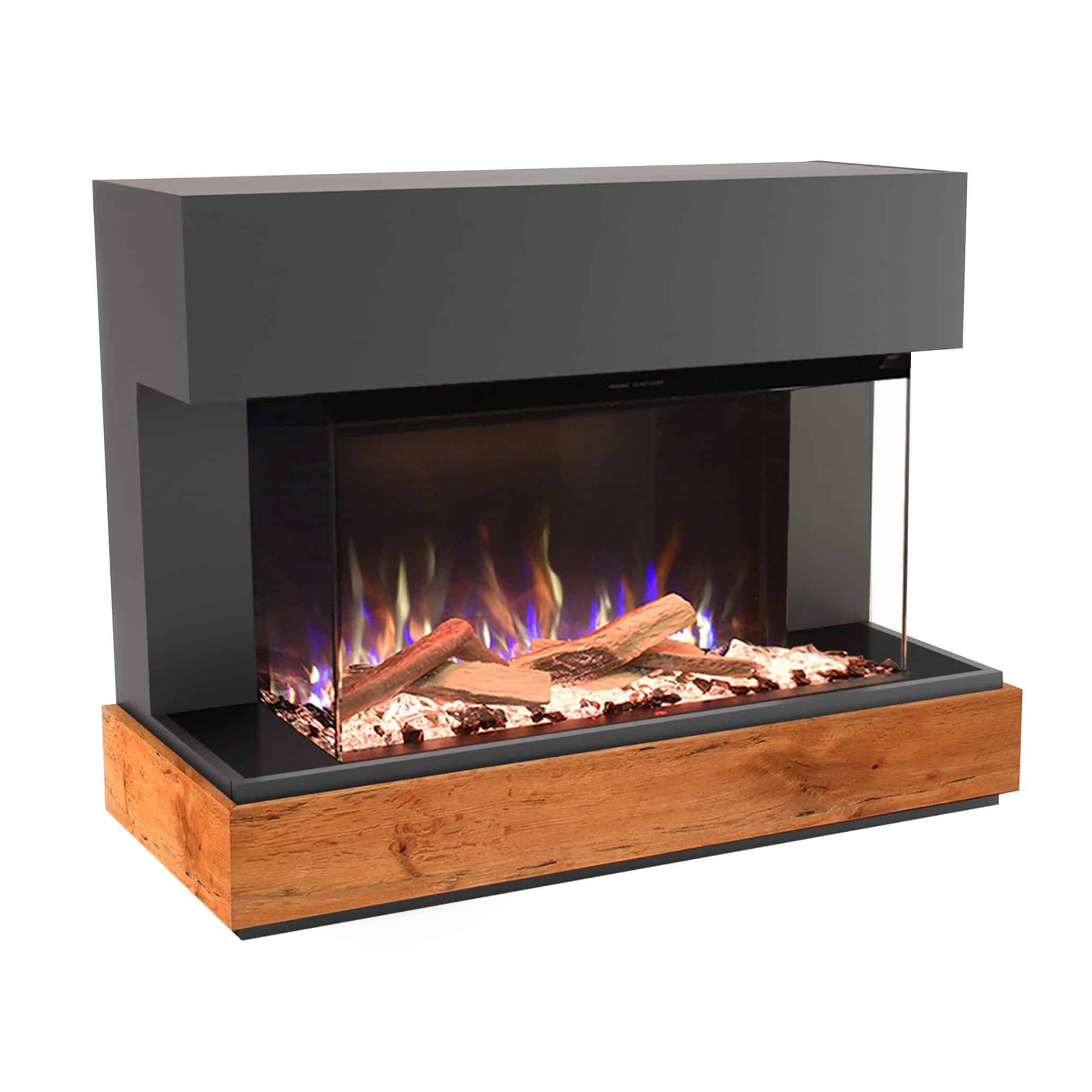
Control and thermostat
Modern electric fireplaces often have a thermostat that monitors the room temperature and automatically turns the heater on and off once the desired temperature is reached. This not only contributes to energy savings but also ensures an even heat level in the room. This is the case, for example, with the Glow Fire Einstein insert. The E-Motion electric fireplace insert features this thermostat function. Many of our models are also equipped with a timer, so the fireplace only runs for a set period of time and then switches off.
Electric fireplaces as primary or additional heating?
In most cases, electric fireplaces aren't designed as the primary heating source for an entire house or large apartment. They're ideal as supplemental heating for individual rooms or for quickly warming smaller areas. However, in well-insulated homes or during mild winter days, they can temporarily support or even replace central heating.
In situations where a quick and targeted heat source is needed, such as in holiday homes, conservatories or as temporary heating during the transitional season, electric fireplaces represent a practical and flexible solution.

Safety of electric fireplaces
Electric fireplaces offer an attractive blend of aesthetics and functionality, but another key advantage is their high level of safety . Compared to traditional fireplaces that use open flames and real fuels like wood or gas, electric fireplaces are a significantly lower-risk alternative. They are particularly suitable for households with children, pets, or in rooms where an open flame is not possible or permitted.
1. No open fire
One of the greatest safety advantages of electric fireplaces is the absence of a real fire. This eliminates the risk of flying sparks, smoke, or the danger of igniting nearby flammable materials. Because the "flames" are purely visual, there is no fire hazard like with traditional wood or gas fireplaces. Unlike other electric fireplaces, the flame pattern on the Glow Fire SCM Screen Motion even simulates smoke and flying sparks.
2. No exhaust fumes or smoke
Traditional fireplaces produce smoke, soot, and potentially harmful fumes like carbon monoxide. Electric fireplaces, on the other hand, operate entirely without combustion, meaning they release no smoke or toxic gases. This makes them especially safe for indoor use, where no special ventilation or chimney is required. They also eliminate the risk of carbon monoxide poisoning, which can be a serious hazard with conventional fireplaces.
3. Cool surface
While an electric fireplace emits heat, the external surfaces typically remain relatively cool, especially the flame and decorative elements. The heating elements that generate the heat are safely housed inside the unit, eliminating the risk of burning yourself on the outside of the fireplace. This is a major advantage over real fireplaces, which often become very hot and can cause serious burns if touched. Almost all models are also designed so that the heating function can be completely turned off, allowing only the flame effect to be used without generating any heat.
4. Automatic shutdown and overheating protection
Electric fireplaces are often equipped with modern safety features such as overheat protection . This mechanism ensures that the device automatically shuts off if it gets too hot, preventing damage or even fire. This feature is especially useful when the fireplace is in use for extended periods or when objects accidentally block the vents.
Some models also feature an automatic shut-off if they tip over or are moved, which is especially important in homes with children or pets. This feature prevents the fireplace from continuing to run in unsafe positions, significantly increasing safety standards.
5. No fuel and no ash
Electric fireplaces don't require firewood, gas, or other fuels to store and refill. They also don't produce ash or embers, which could pose a fire hazard if mishandled. This makes electric fireplaces not only safer, but also cleaner and less maintenance-intensive.
6. Easy installation and safe use
Because electric fireplaces don't require a chimney or special ventilation, they're easy to install and don't require any structural changes to the home. Simply plugging the fireplace into an electrical outlet reduces the risk of installation errors that can occur with traditional fireplaces. Operating an electric fireplace requires no special precautions, other than the usual caution when handling electrical devices.
7. Security certificates and standards
Most electric fireplaces on the market carry safety certifications such as CE, TÜV, or other national and international standards. These certificates guarantee that the devices have undergone rigorous testing and meet current safety standards. When purchasing an electric fireplace, make sure that these certifications are present to ensure the device meets the highest safety requirements.
8. Additional protective measures
Although electric fireplaces are safer than traditional models, some basic precautions should still be observed:
- Ventilation slots should always be kept clear to prevent the device from overheating.
- Children and pets should be warned not to play too close to the fireplace, although the appliance itself does not become dangerously hot to the touch.
- It is advisable not to leave electric fireplaces running unattended for long periods of time, especially in rooms that are not used regularly.







